The best Wi-Fi 6 routers of 2025
The best Wi-Fi 6 routers offer fast speeds and strong signals among standalone units and mesh kits alike
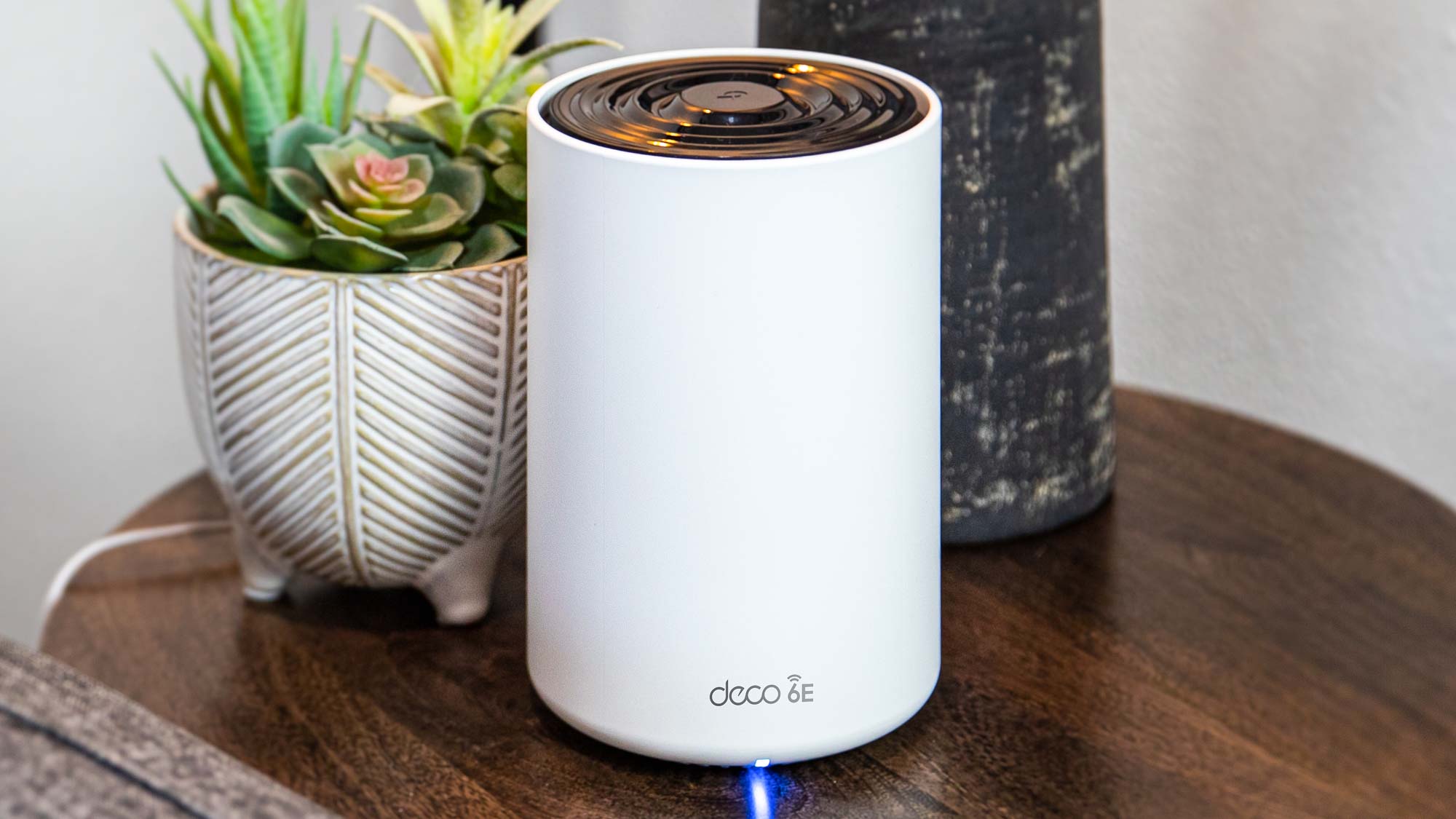
The best Wi-Fi 6 routers can help you get more performance out of your home network, extend its range or support more devices simultaneously. Upgrading to Wi-Fi 6 can also help increase your speeds, especially if you’re using an older Wi-Fi router.
To find out which Wi-Fi 6 routers are really the best, we put them through extensive real-world testing in a real home. This includes running benchmarks at multiple distances to measure both their speed and range. Plus, we evaluate how well each Wi-Fi 6 router is able to move data through walls and ceilings.
Based on our extensive benchmarking, the best Wi-Fi 6 router overall is the Netgear Nighthawk RAXE500. Not only is this router incredibly sleek and blazing fast but it’s also highly customizable. However, if you live in a larger home, we recommend the TP-Link Deco XE75 as this mesh Wi-Fi system offers excellent throughput and even includes built-in security software. If you're on a tight budget though, the TP-Link Archer AX55 has great range and all the ports you need.
There are lots of other great Wi-Fi 6 routers we recommend for different use cases based on our reviews, including budget-friendly options, mesh Wi-Fi systems for whole home coverage and gaming routers for incredibly smooth performance. These are the best Wi-Fi 6 routers you can buy right now.
The quick list
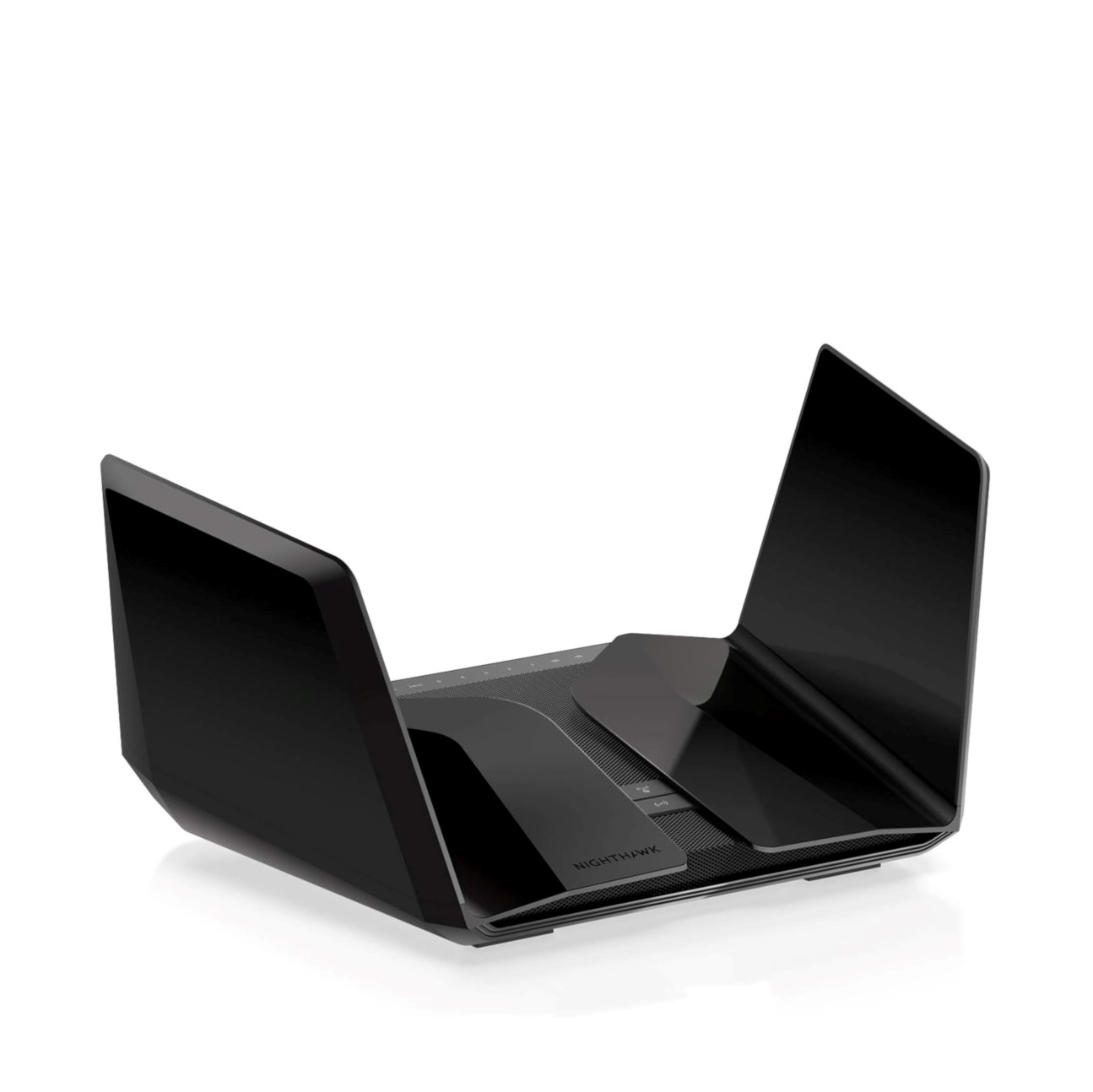
Value: ★★★☆☆
Performance: ★★★★★
Range: ★★★★★
The Netgear Nighthawk RAXE500 is a sleek-looking, tri-band Wi-Fi 6E router with plenty of ports. It has a 2.5 Gbps WAN port for multi-gig internet along with four gigabit LAN ports and two USB ports. The RAXE500 has a range of 105 feet and delivered 2.39 Gbps at 15 feet in our tests.
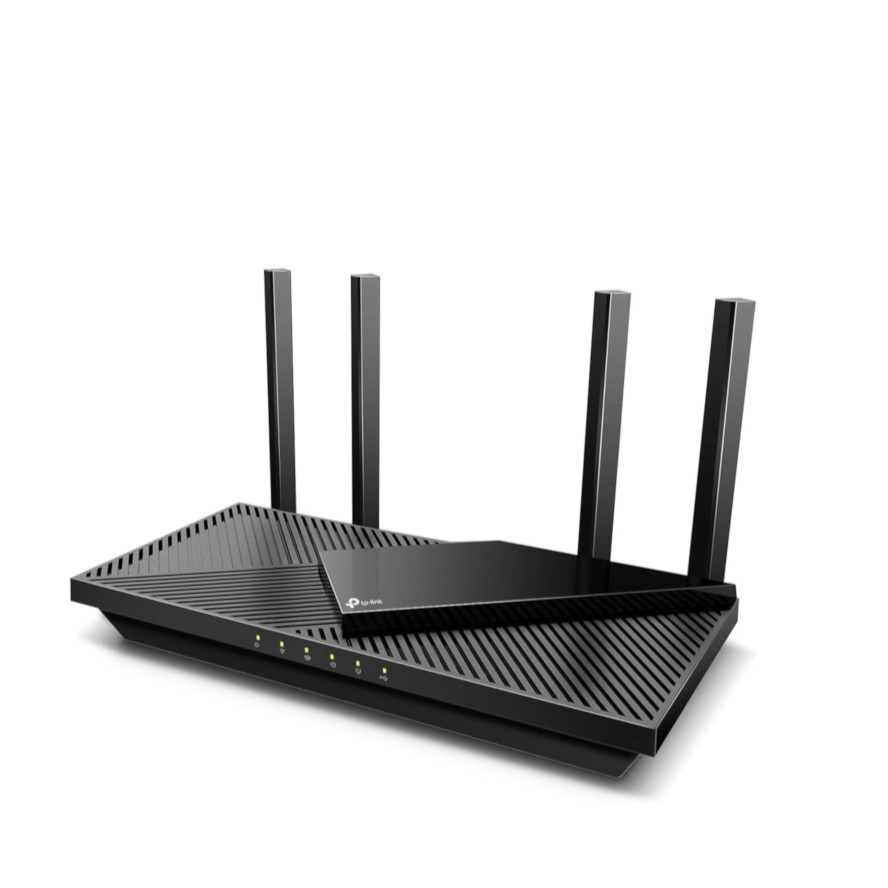
Value: ★★★★★
Performance: ★★★☆☆
Range: ★★★★★
The TP-Link Archer AX55 is an inexpensive dual-band router that's on the smaller side. It has a gigabit WAN port along with four gigabit LAN ports as well as a USB 3.0 port for sharing data across your network. The Archer AX55 reached speeds of 823.7 Mbps at 15 feet in our tests with a range of 110 feet.
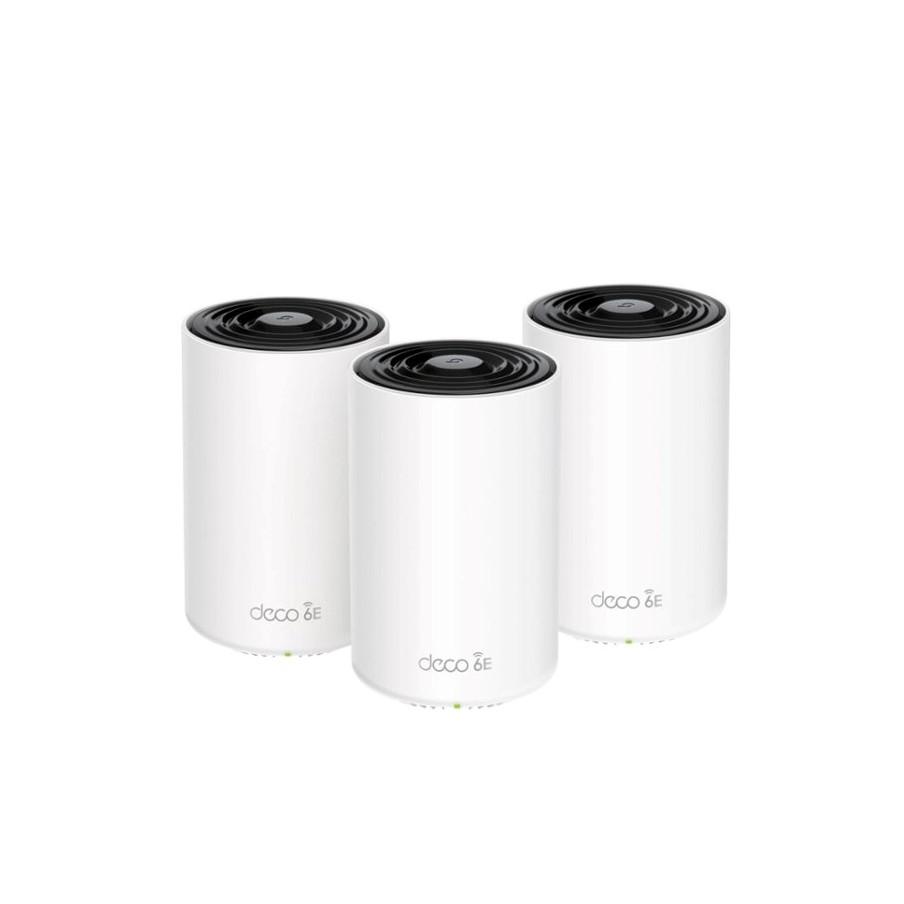
Value: ★★★★★
Performance: ★★★★☆
Range: ★★★★☆
The TP-Link Deco XE75 is a more affordable tri-band, Wi-Fi mesh system for larger homes. At the back, you'll find three gigabit Ethernet ports and each unit can be used as either the main router or a satellite. In our tests, the Deco XE75 delivered 1.22 Gbps at 15 feet with a range of 100 feet.
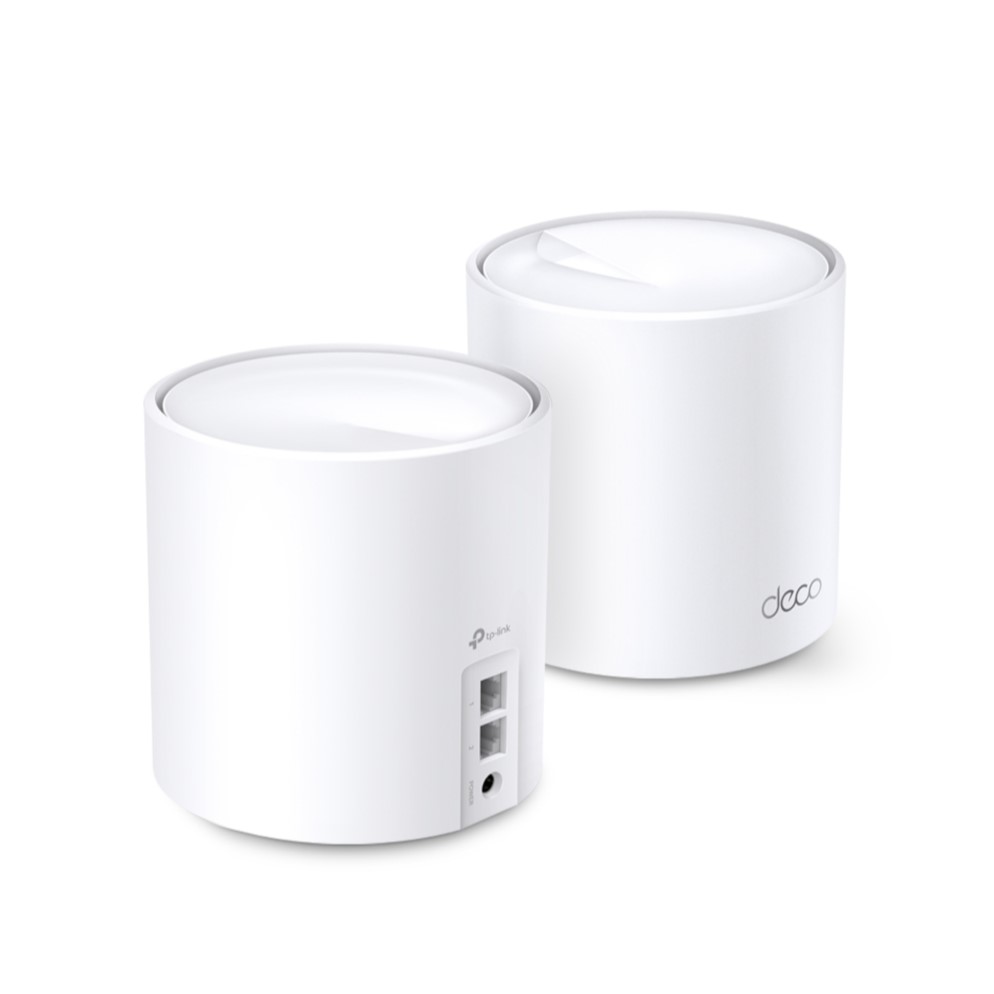
Value: ★★★★☆
Performance: ★★★☆☆
Range: ★★★★☆
The TP-Link Deco X20 is a very affordable dual-band, mesh Wi-Fi system for small to mid-sized homes. Around back, you’ll find two gigabit Ethernet ports and each unit can also be used as either the main router or a satellite. The TP-Link Deco X20 reached a top speed of 622 Mbps at 15 feet in our tests with a range of 95 feet.
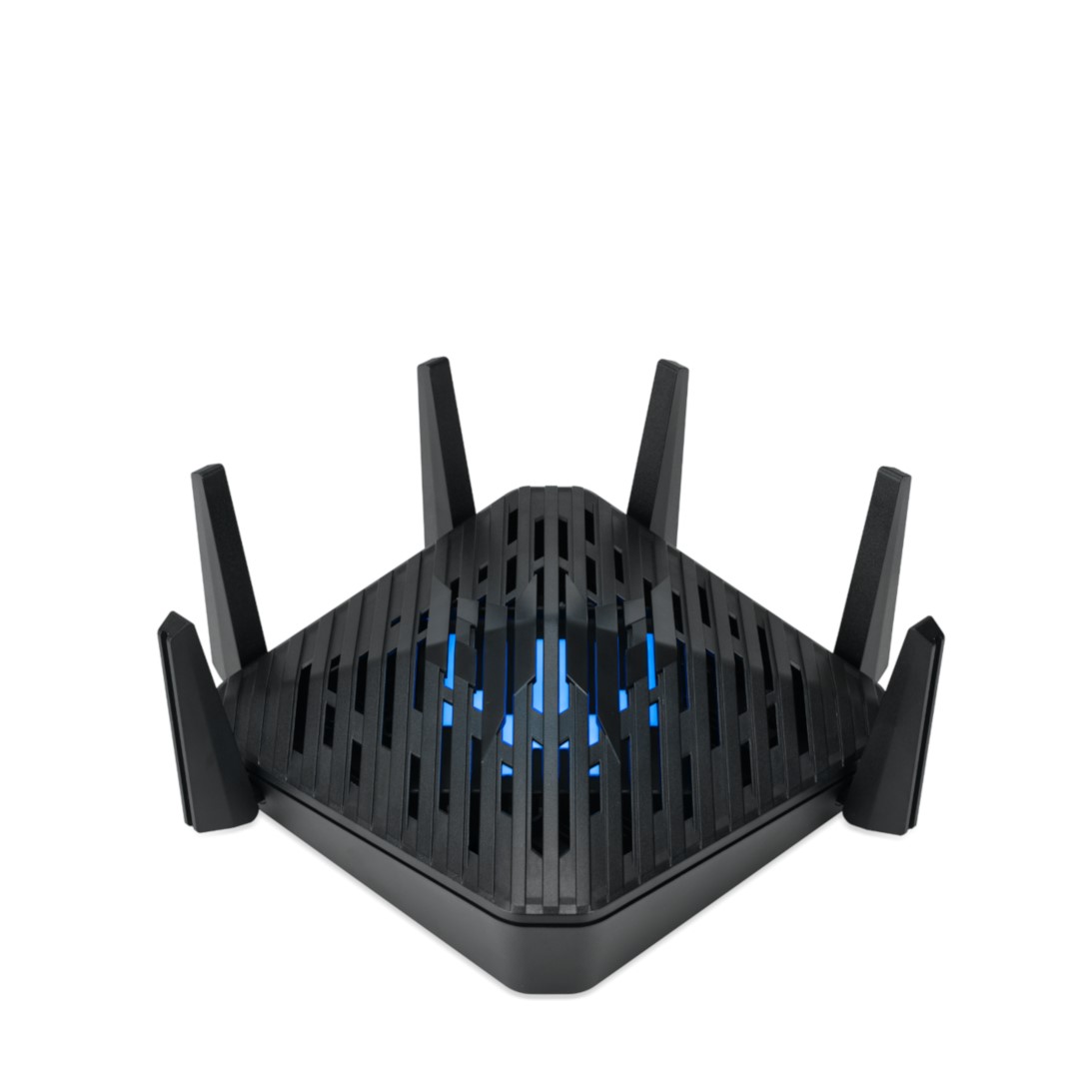
Value: ★★★★☆
Performance: ★★★★☆
Range: ★★★★☆
The Acer Predator Connect W6 is a tri-band router designed for gamers. It has a 2.5 Gbps WAN port, four gigabit LAN ports and comes with built-in security software and Intel's Killer Prioritization Engine to speed up online gameplay. The Predator Connect W6 reached a maximum speed of 1 Gbps at a distance of 15 feet with a range of 105 feet.
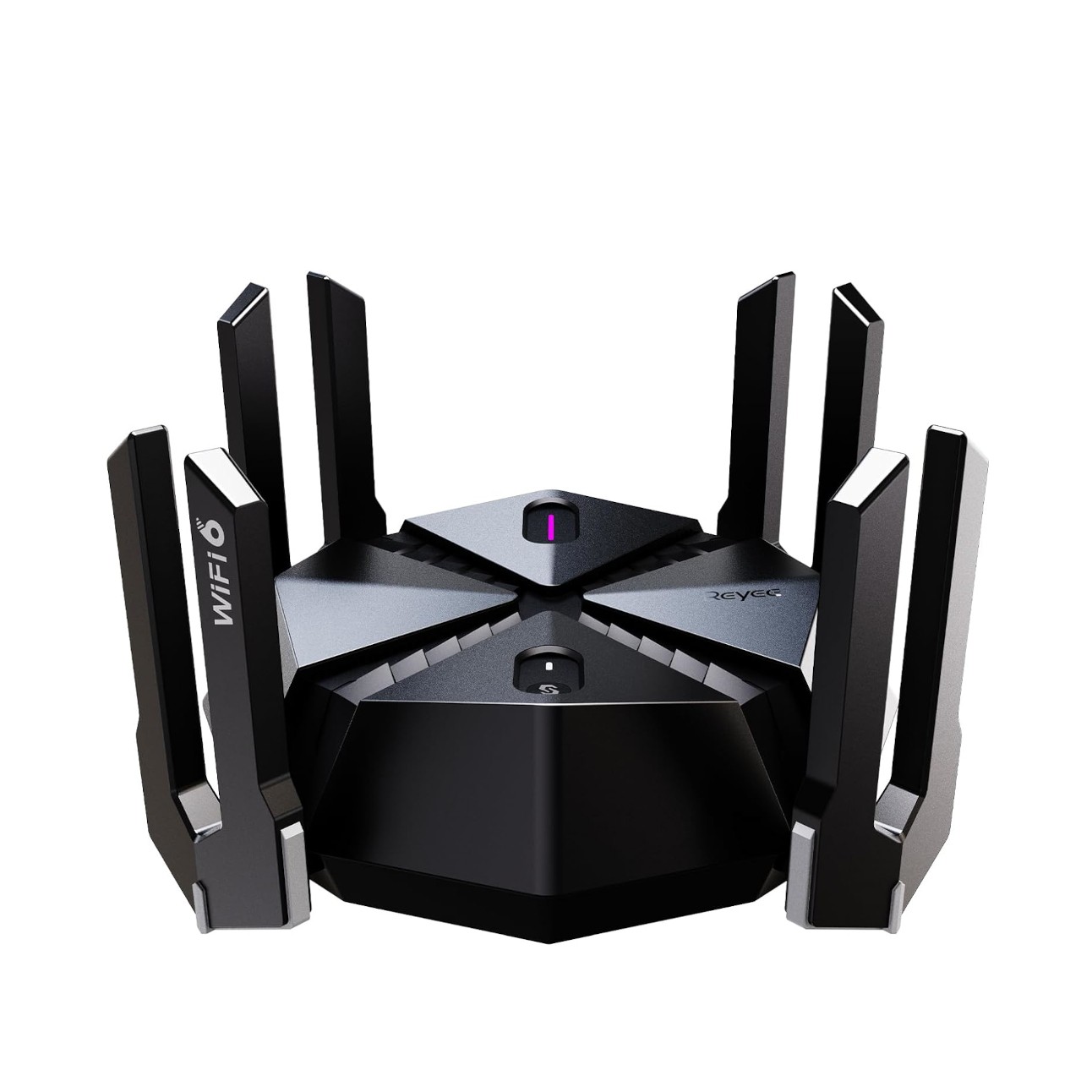
Value: ★★★★☆
Performance: ★★★★☆
Range: ★★★☆☆
The Reyee RG-E6 is a very affordable dual-band, gaming router with 8 high-powered antennas for improved wall penetration. Around back it has a 2.5G input port along with 4 gigabit Ethernet ports including a dedicated one for gaming. In our tests, the Reyee RG-E6 reached a max speed of 1.1 Gbps at a distance of 15 feet with a range of 95 feet.
Read more below
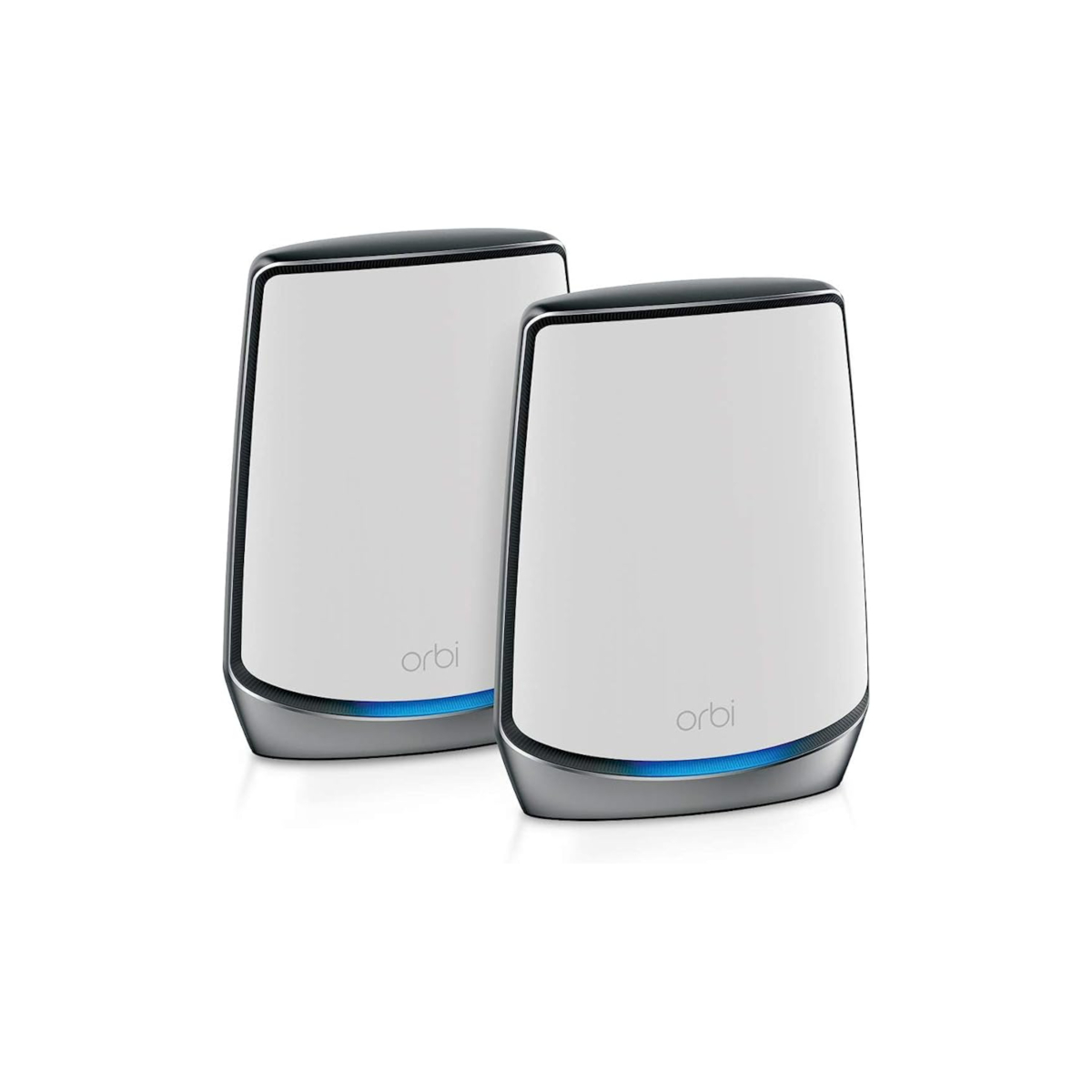
Value: ★★★☆☆
Performance: ★★★★☆
Range: ★★★★☆
The Netgear Orbi WiFi 6E (RBKE963) is a tri-band, mesh router with excellent performance. The main unit has a 10 Gbps WAN port, three gigabit LAN ports and a 2.5 Gbps LAN port. The Orbi RBKE96e has a 95 foot range and it delivered gigabit speeds at 15 feet in our tests.
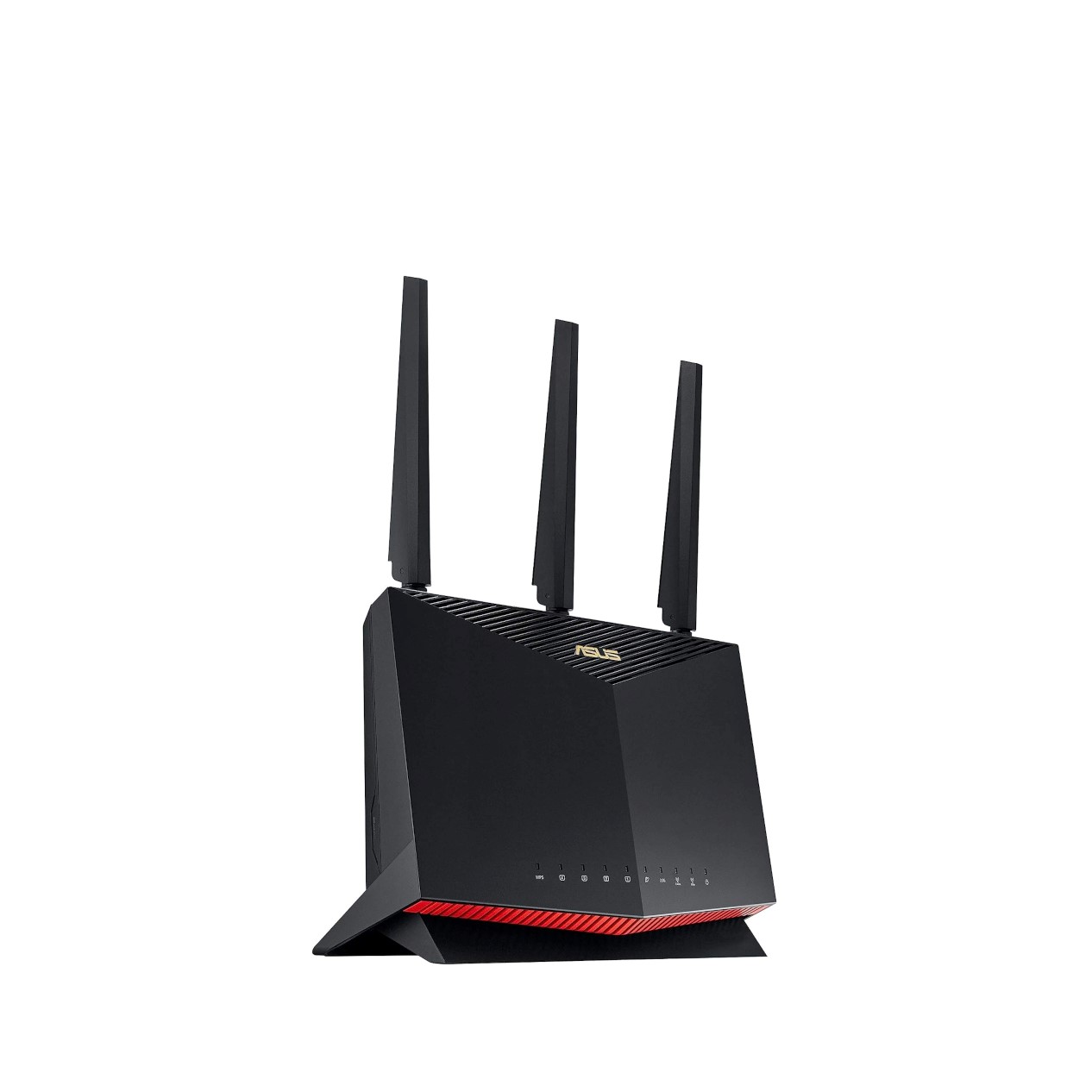
Value: ★★★★☆
Performance: ★★★★☆
Range: ★★★★☆
The Asus RT-AX86U is a dual-band router that's reasonably priced and highly customizable. At the back, there's a gigabit as well as a 2.5G WAN port, four gigabit Ethernet ports and two USB 3.0 ports. The RT-AX86U has a range of 95-feet and it reached speeds of 929 Mbps at 15 feet in our tests.
The best Wi-Fi 6 routers you can buy today
Why you can trust Tom's Guide
The best Wi-Fi 6E router overall
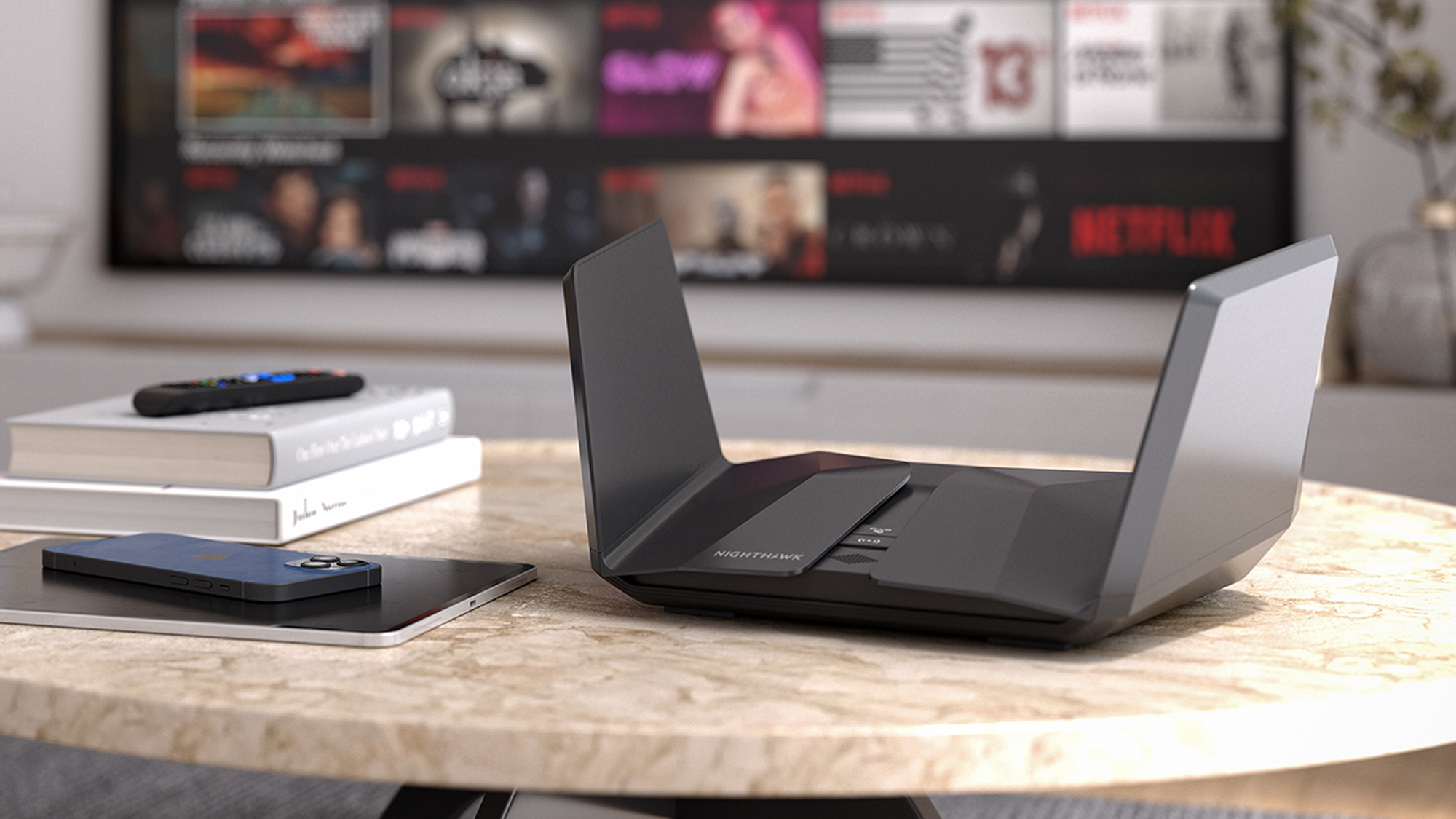
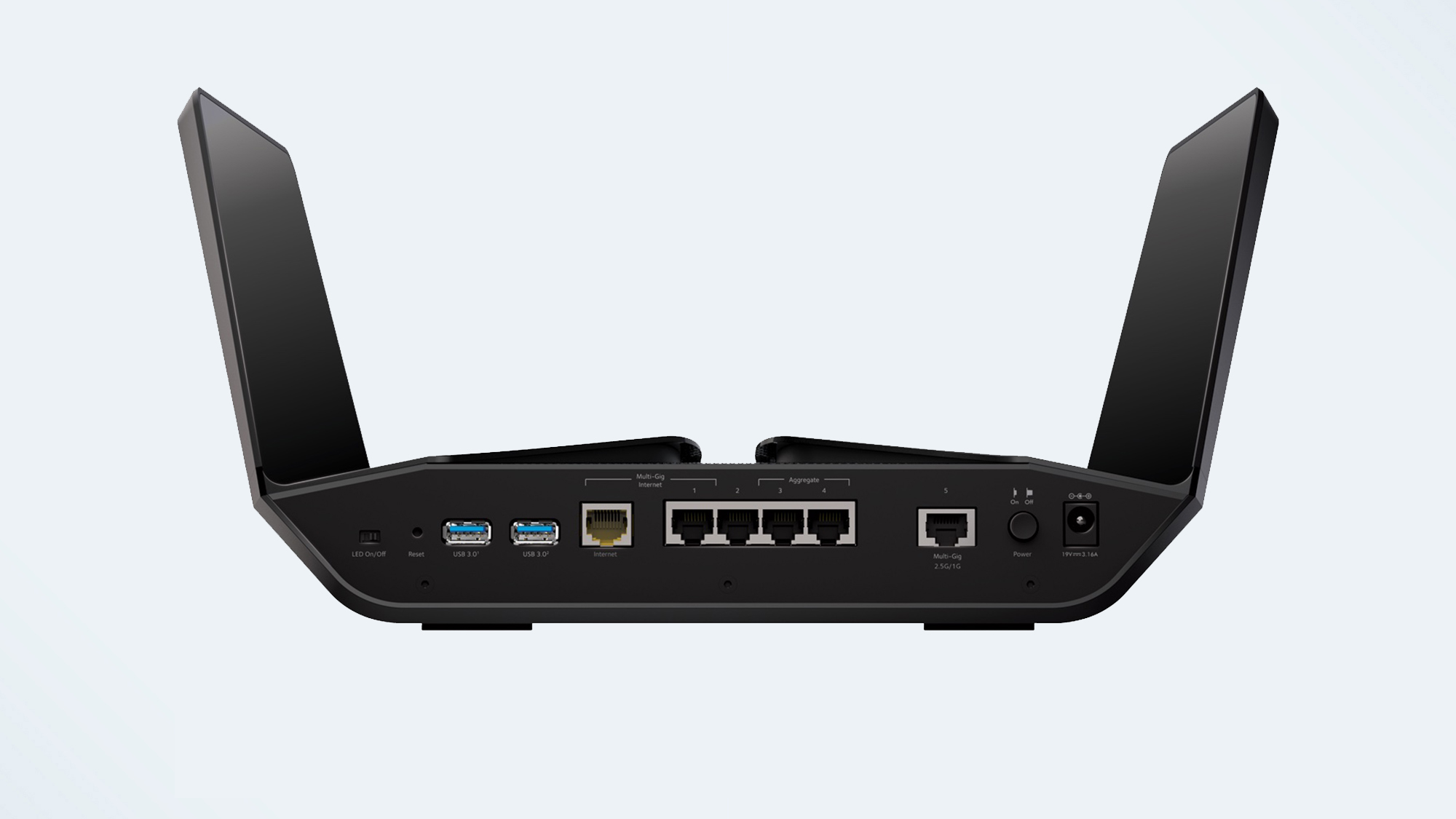
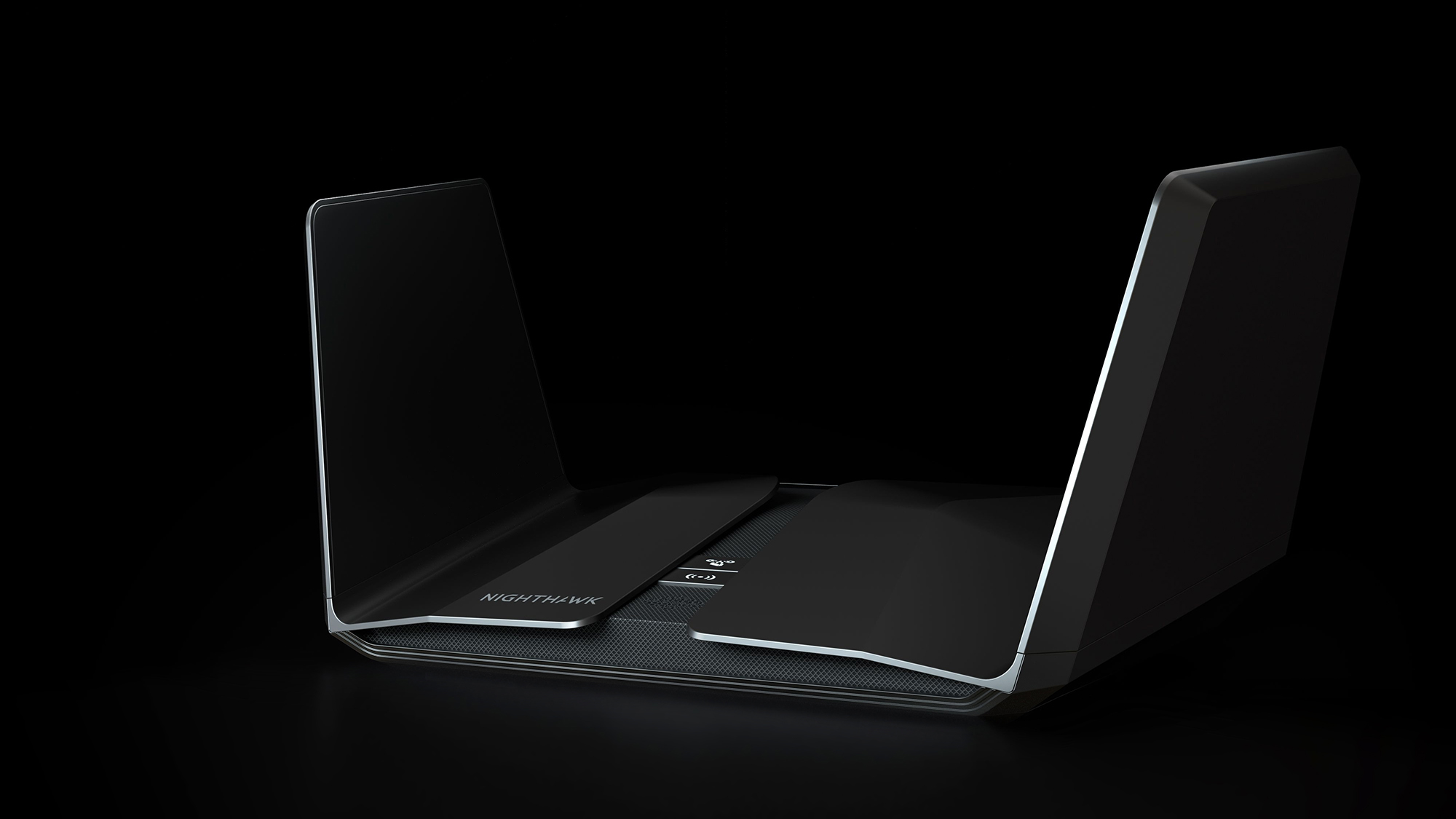
Specifications
Reasons to buy
Reasons to avoid
The Netgear Nighthawk RAXE500 was the first Wi-Fi 6e router to hit the market, and the results are mind-blowing. By adding a 6-GHz band to the already impressive capabilities of Wi-Fi 6, the Nighthawk RAXE500 delivers category-leading performance.
With an AXE11000 rating, the tri-band device more than lives up to the hype by delivering nearly 2.5 Gbps of real-world data. Add this to the slick design and highly customizable configuration options, and the Netgear Nighthawk RAXE500 becomes one of the best routers we've ever reviewed, and possibly the fastest.
By adding access to a slew of new data-delivering channels in the 6-GHz spectrum, the tri-band Netgear Nighthawk RAXE500 takes the lead as the first high-performance Wi-Fi 6e router. While it’s best at close quarters and is quite expensive, the RAXE500 is worth every penny if you have the need for speed.
Read our full Netgear Nighthawk RAXE500 review.
The best budget Wi-Fi 6 router
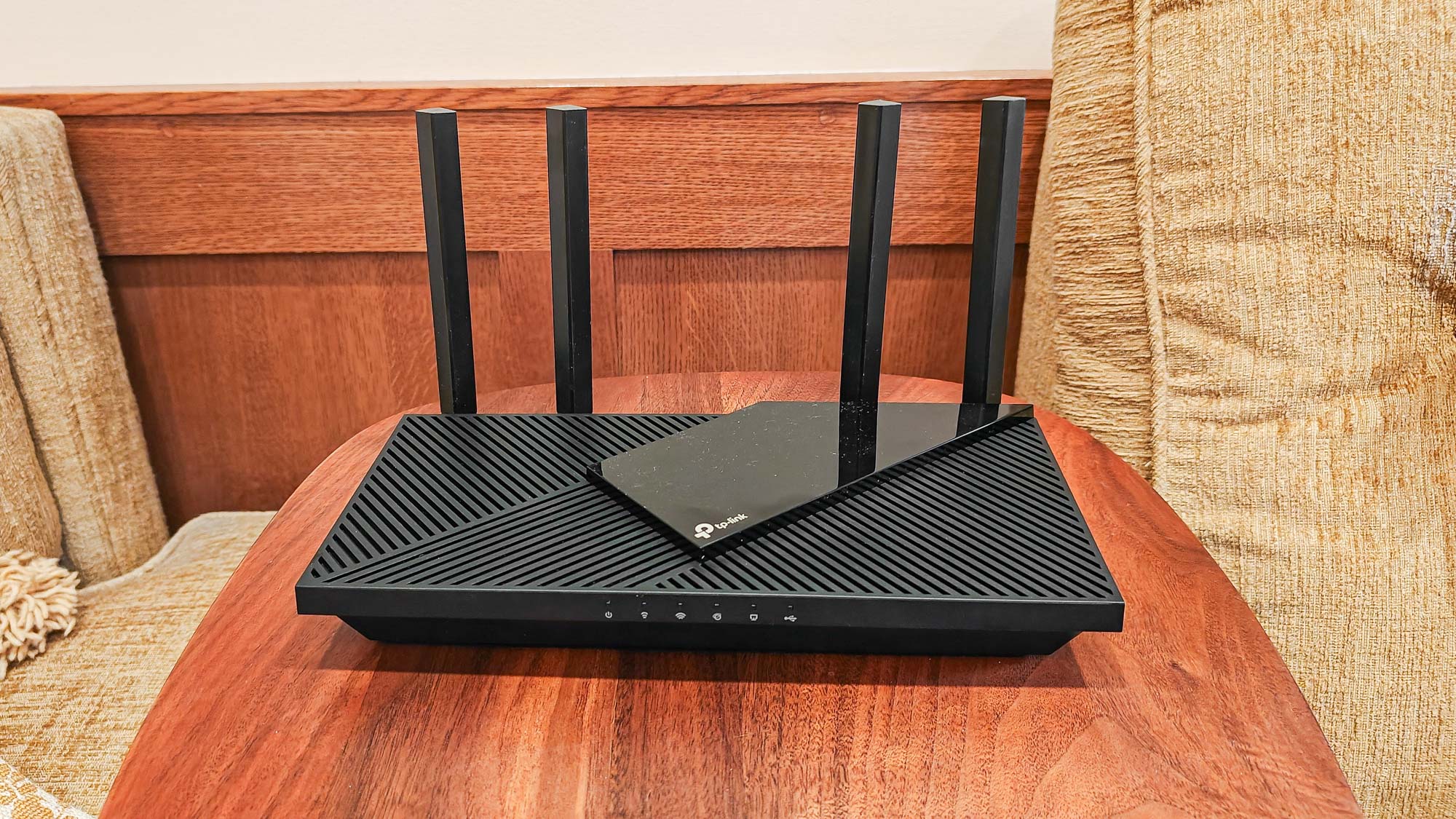
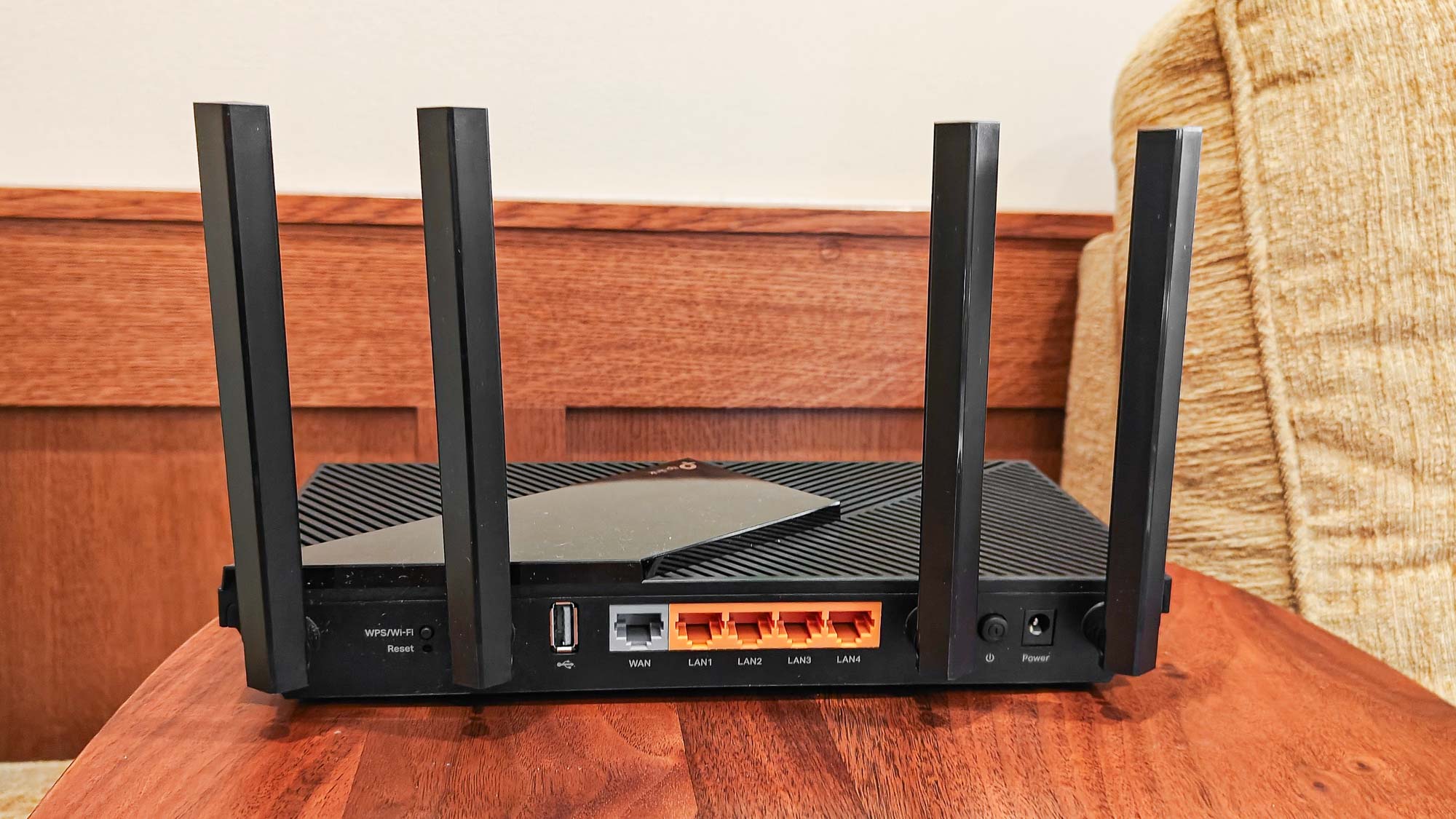
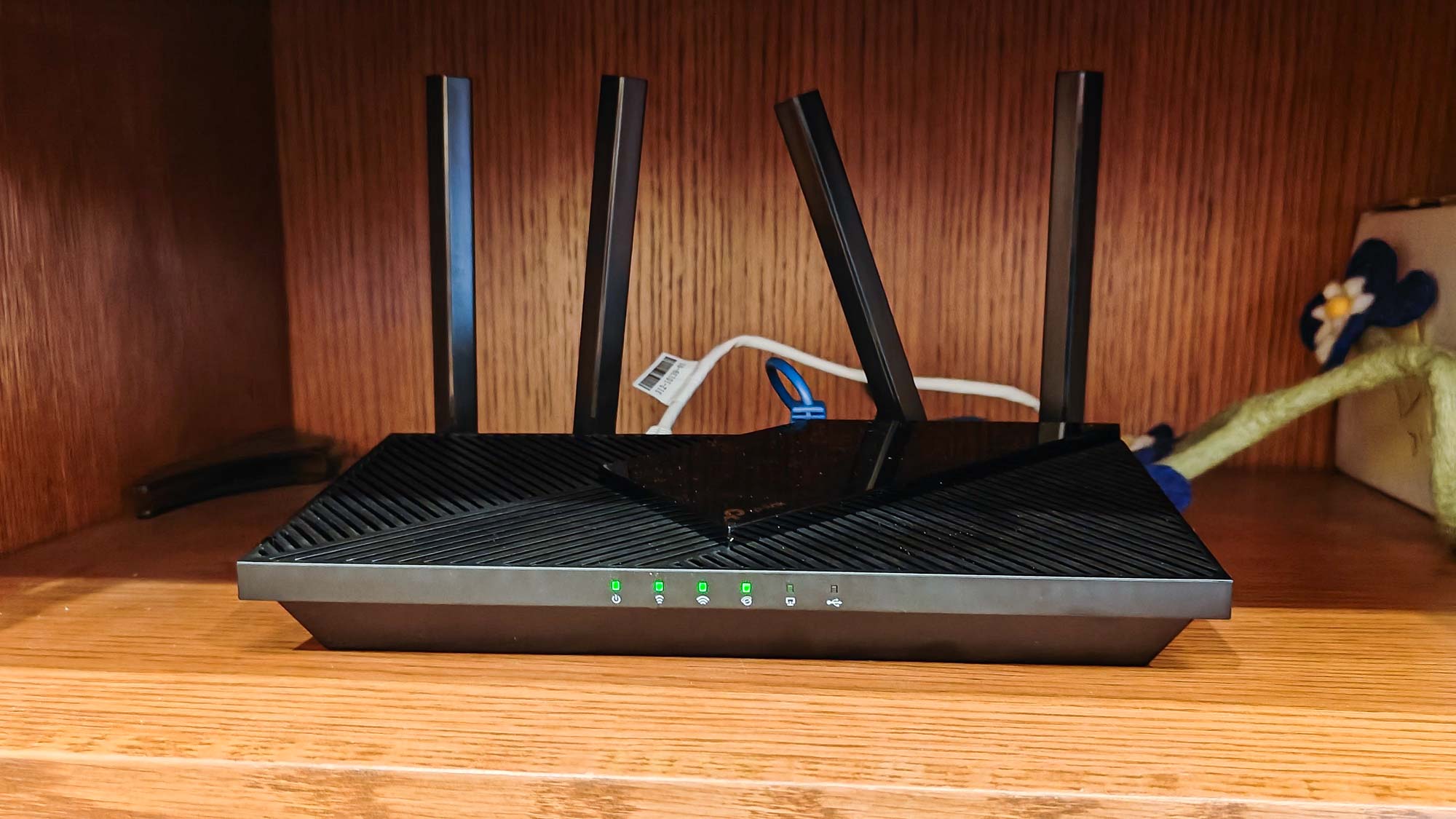
Specifications
Reasons to buy
Reasons to avoid
The TP-Link Archer AX55 provides an easy and reliable way to upgrade to Wi-Fi 6 without breaking the bank. This dual-band router can also be added to a mesh network down the line as it also supports TP-Link's OneMesh technology. At just $130 and often on sale for less, the TP-Link Archer AX55 is a great budget router that comes with a 2-year warranty and built-in security software to keep your home network safe. Even at this low price, it comes with some really useful features like OFDMA technology to speed up simultaneous transmission to more devices and Target Wake Time to help your connected devices consume less power.
At the back of the Archer AX55, there's a gigabit WAN input to connect to your cable modem along with four gigabit LAN ports for your wired devices and a USB 3.0 port for connecting a flash drive or external hard drive to share data across your network. The four antennas at the top of the device can be repositioned for a better signal and during our testing, the Archer AX55 was able to move up to 823.7 Mbps at a distance of 15 feet. Overall, it had a total range of 110 feet. If you're looking for an inexpensive way to upgrade to Wi-Fi 6 and don't want a large router taking up extra space, the Archer AX55 is a great choice.
Read our full TP-Link Archer AX55 review.
The best Wi-Fi 6E router for mesh

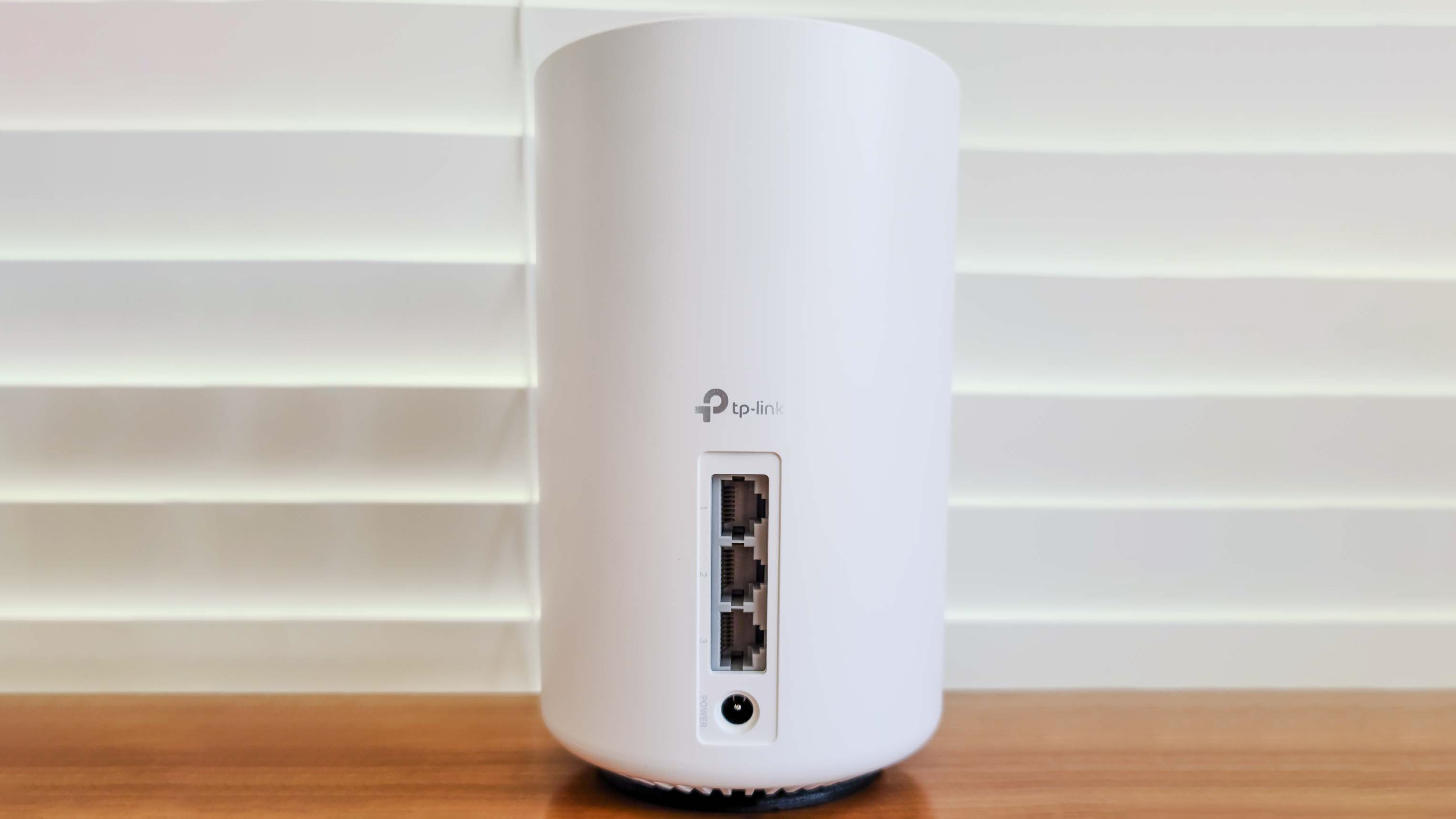
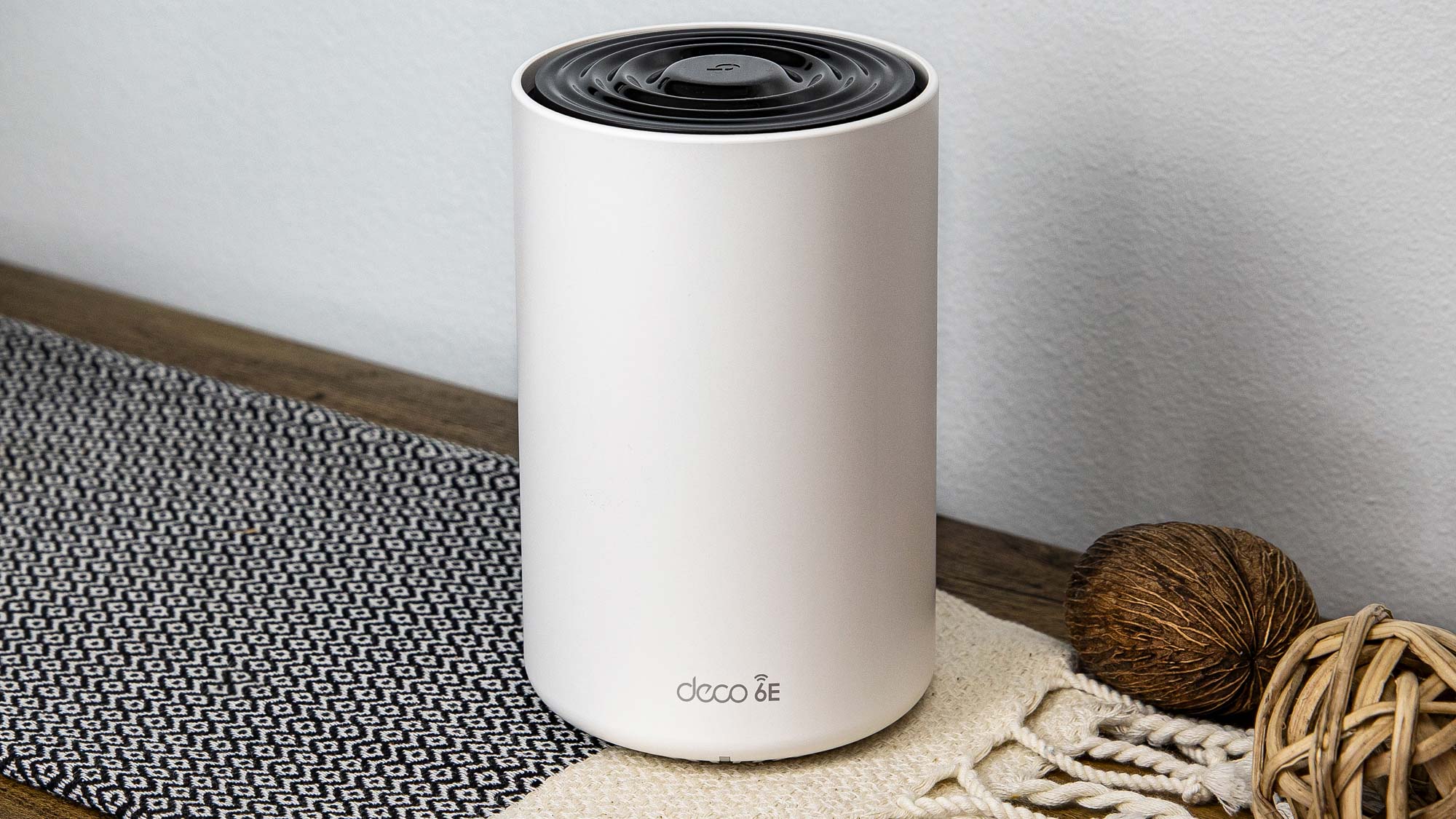
Specifications
Reasons to buy
Reasons to avoid
The Deco XE75 from TP-Link is available in either two-packs or three-packs and this mesh router system provides an inexpensive way to create a Wi-Fi 6E network that can fill your whole home with Wi-Fi. Each of the two (or three) nodes can act as either a satellite or a router and they all have three Ethernet ports that can be used to hardwire devices or as a wired access point.
In our testing, the Deco XE75 had excellent data flow through walls, clause up and at middle distances with a throughput of 1.220 Gbps at 15 feet. While you can use the 6GHz band to connect newer computers and phones, you can also use it for wireless backhaul between the unit designated as the router and the satellites. One downside to the XE75 is that its Ethernet ports only support 1Gbps which is why TP-Link just released the Deco XE75 Pro which features a 2.5G Ethernet port for multi-gig connections.
Read our full TP-Link Deco XE75 review
The best budget Wi-Fi 6 mesh router

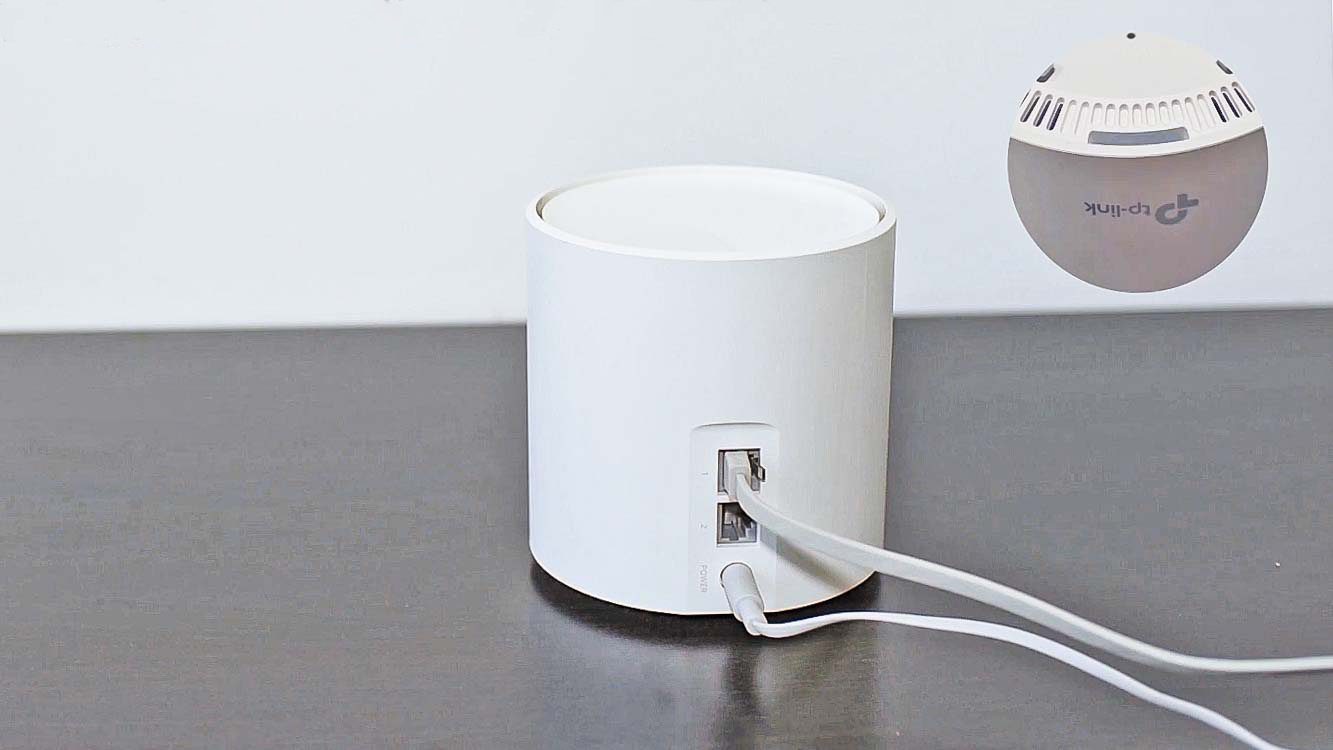
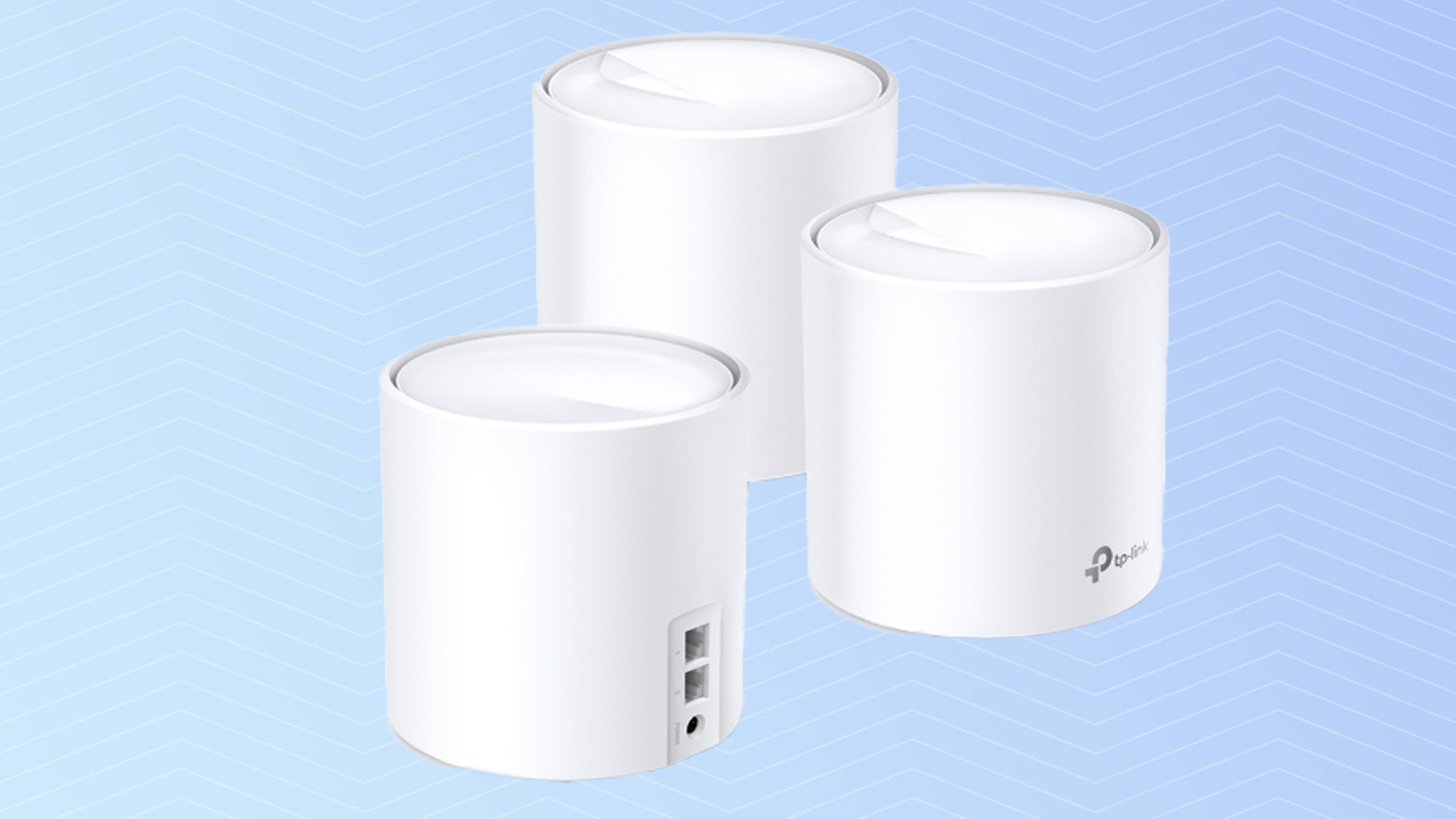
Specifications
Reasons to buy
Reasons to avoid
If the Deco XE75 is out of your budget or you don’t have any Wi-Fi 6E-equipped devices, then the TP-Link Deco X20 is a very affordable mesh Wi-Fi system. Available in either a two-pack or a three-pack for less than $200, this mesh system offers an inexpensive way to fill your entire home with a strong Wi-Fi connection. The Deco X20 doesn’t offer nearly the same performance as the XE75 but if your internet speeds are less than a gigabit, you likely won’t even notice.
At 4.3 x 4.3 x 4.5 inches, the Deco X20 devices are quite small and easy to hide around your home. On the back of each unit, there are only two gigabit Ethernet ports which means you’ll likely have to pick up a network switch alongside it if you have a lot of wired devices. In our testing, the Deco X20 reached a max speed of 522.1 Mbps at 15 feet with a range of 95 feet.
While its speeds are certainly not the fastest, you do get built-in security software to protect your home network from malware. If you’re on a tight budget and are tired of dealing with Wi-Fi dead zones, the TP-Link Deco X20 could be the perfect solution.
Read our full TP-Link Deco X20 review.
The best Wi-Fi 6E router for gamers
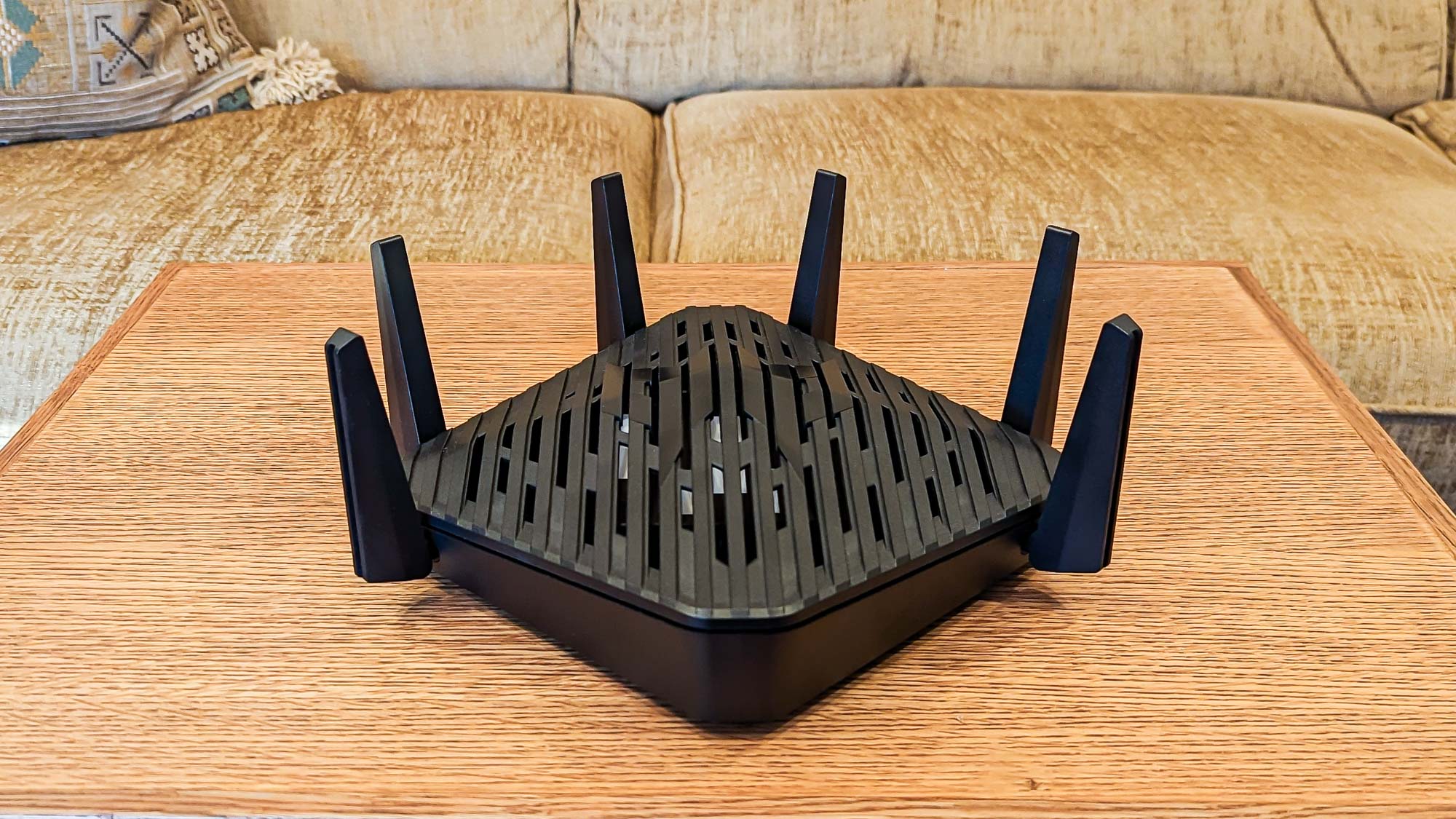
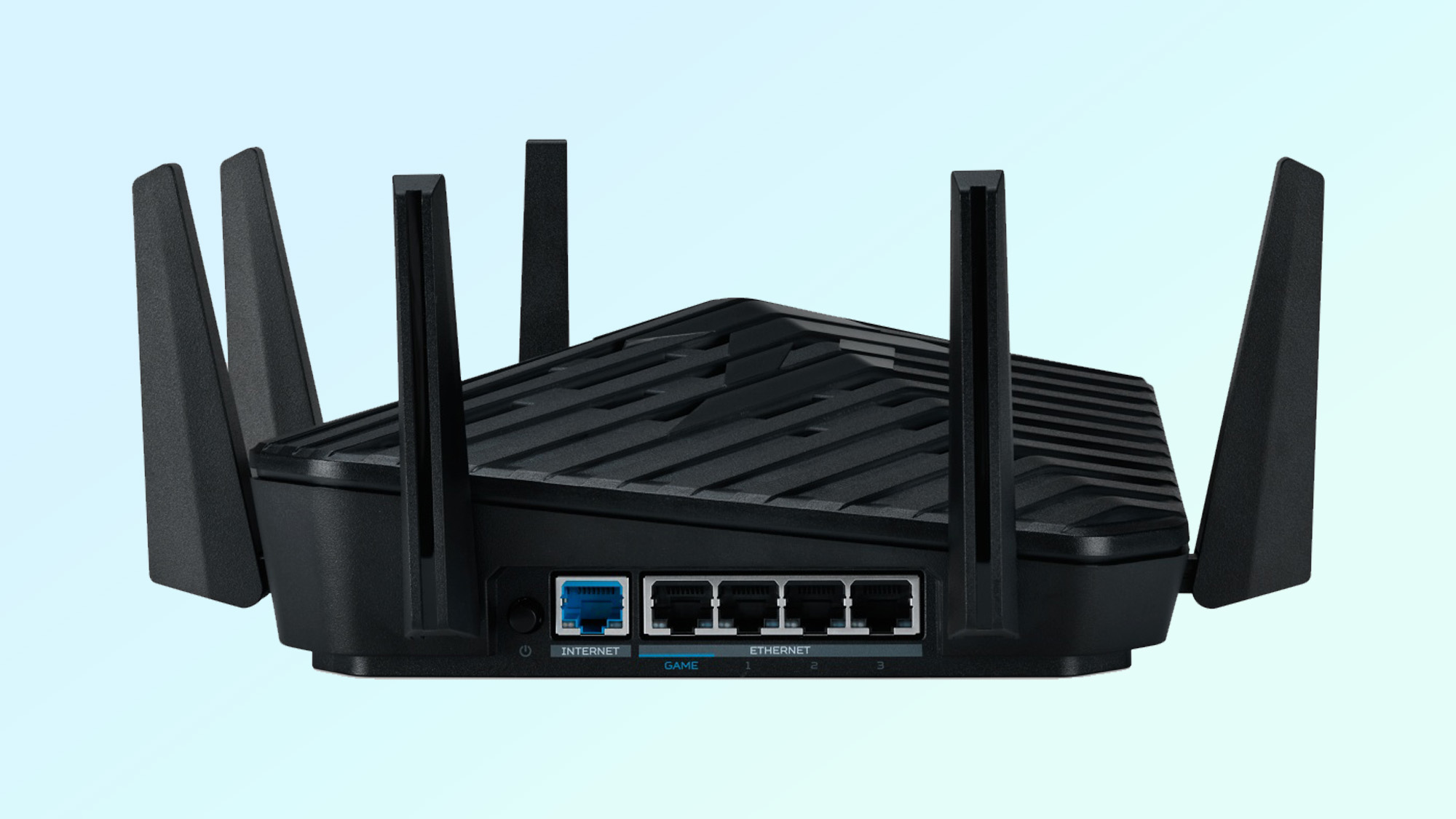
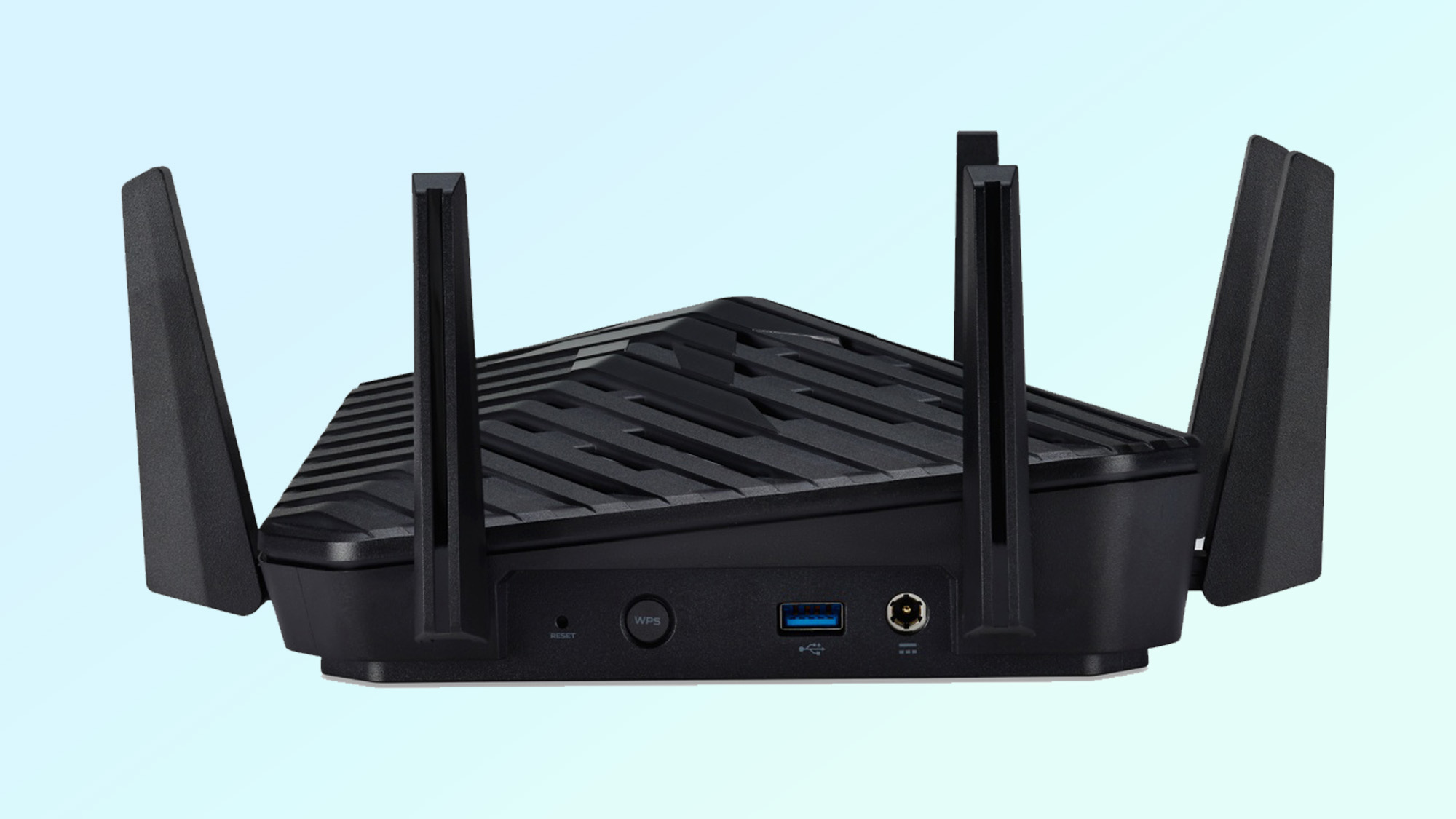
Specifications
Reasons to buy
Reasons to avoid
The Acer Predator Connect W6 is an affordable Wi-Fi 6E gaming router that delivers good performance for the price, comes with built-in security software and has plenty of gaming-oriented extras. This tri-band gaming router also frequently goes on sale for half off its list price of $300.
At the back of the Predator Connect W6, you’ll find a 2.5 Gbps WAN port along with four gigabit LAN ports. However, one of them is your designated GAME port in a similar way to how one port on a TV is designated as the HDMI eARC port. It has six repositionable antennas on top along with plenty of vents to keep it cool which actually have LED lights hidden underneath them. Besides built-in security software from Trend Micro, you also get support for Intel’s Killer Prioritization engine and the ability to tap into Nvidia’s GeForce Now cloud gaming network to speed up some popular online games.
In our testing, the Predator Connect W6 reached a maximum speed of just over 1 Gbps at a distance of 15 feet with an overall range of 105 feet. It may not be as fast as other gaming routers but it does cost half or even a third of the price. If you want the performance of a gaming router with some nice extras without having to spend a whole lot more, the Predator Connect W6 is a great choice.
Read our full Acer Predator Connect W6 review.
The best budget Wi-Fi 6 router for gamers
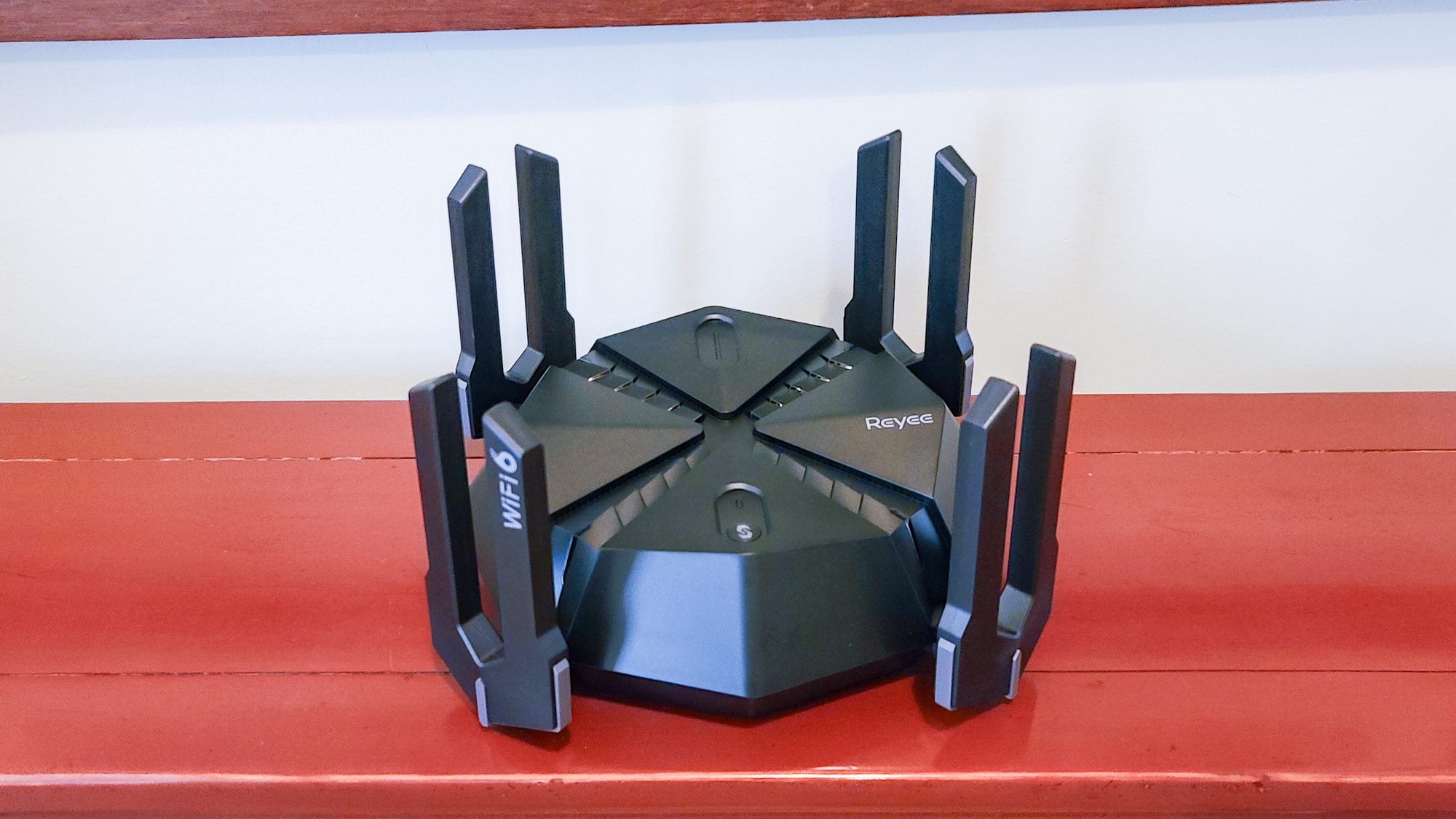
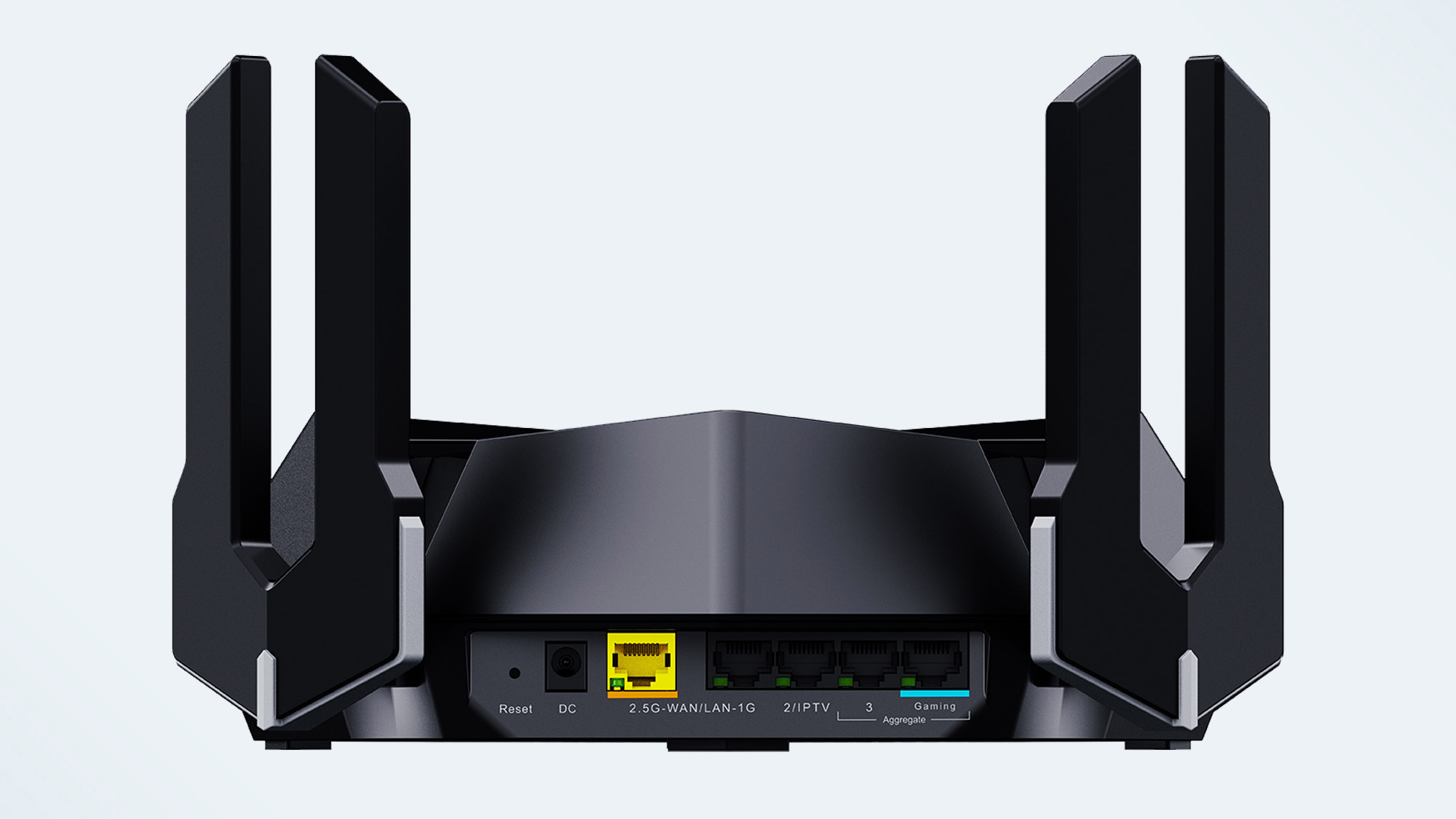
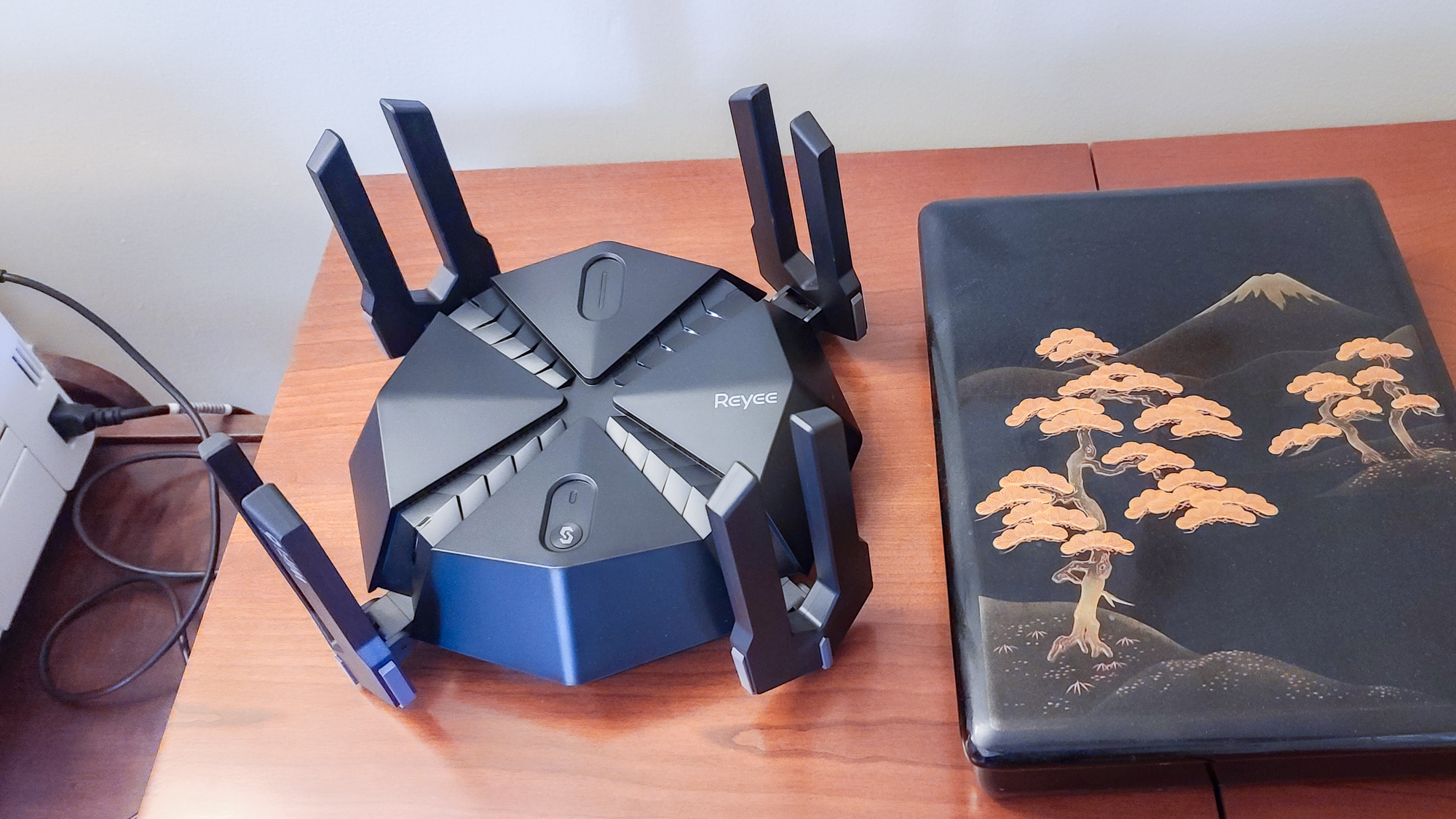
Specifications
Reasons to buy
Reasons to avoid
The Reyee RG-E6 is a more budget-friendly alternative to the Acer Predator Connect W6 that still packs in plenty of features for the price. While it may not pack in extra security software, you do get strong close and midrange performance as well as 8 high-performance antennas for better wall penetration.
At the rear of the Reyee RG-E6, there’s a 2.5G WAN input port along with four gigabit LAN ports and just like on the Predator Connect W6, one of them is a dedicated gaming port. At 10.2 x 10.2 x 6.2 inches, it’s slightly larger than Acer’s gaming router but due to its more futuristic design, you’ll probably want to keep the RG-E6 out in the open where it can be seen.
In our speed tests, the Reyee RG-E6 reached a top speed of 1.14 Gbps at a distance of 15 feet with a total range of 95 feet. Its performance stayed strong at 50 feet with a download speed of 505.5 Mbps and if you need extra range, you can build a mesh network using this gaming router with some extra gear from Reyee.
The Reyee RG-E6 may be a Wi-Fi 6 router but we were very impressed with its speeds at this price. If you don’t have any Wi-Fi 6E-equipped devices and live in a small home or a studio apartment, it will more than do the trick.
Read our full Reyee RG-E6 review.
The Best Wi-Fi 6E router for long range
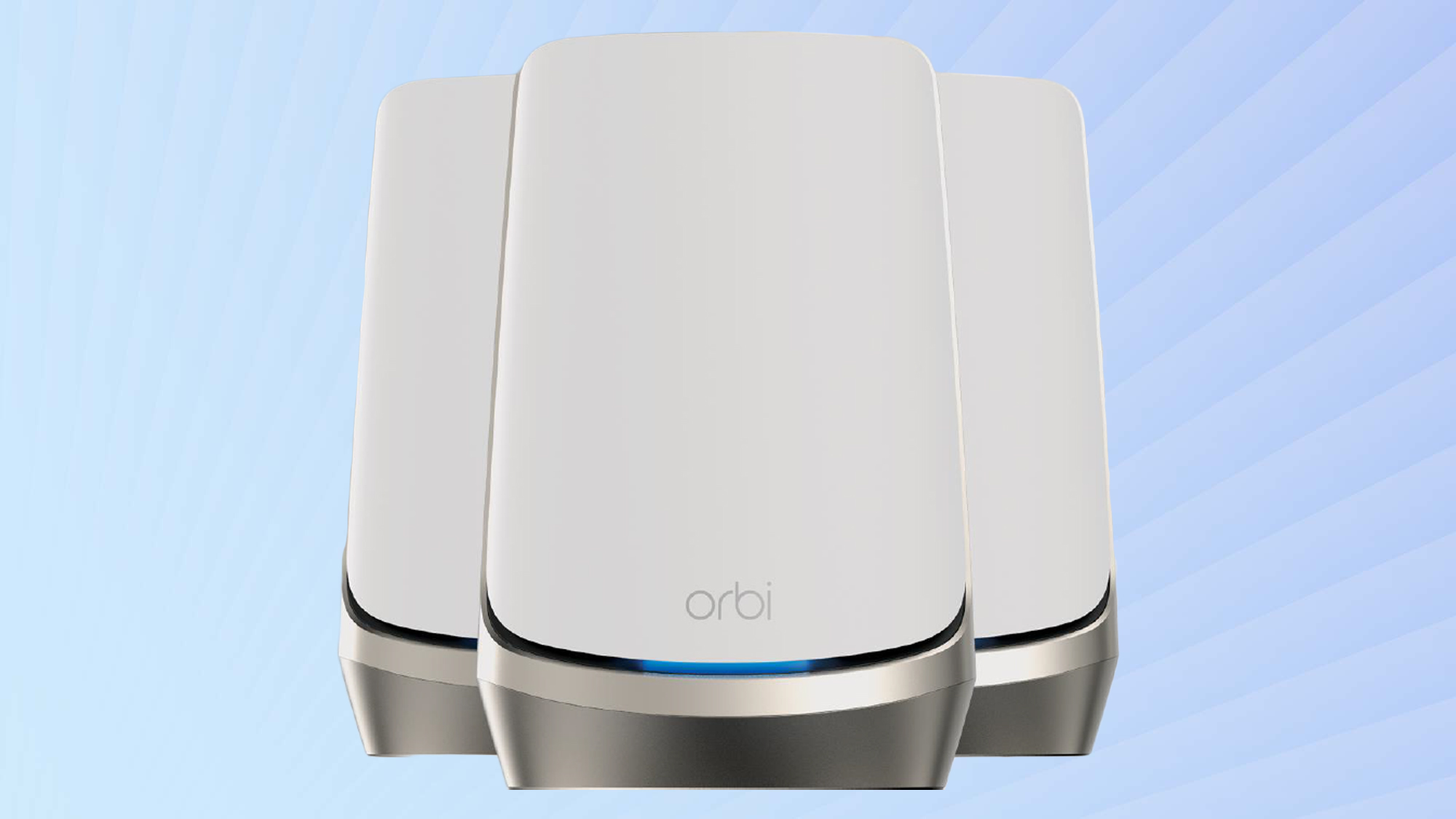
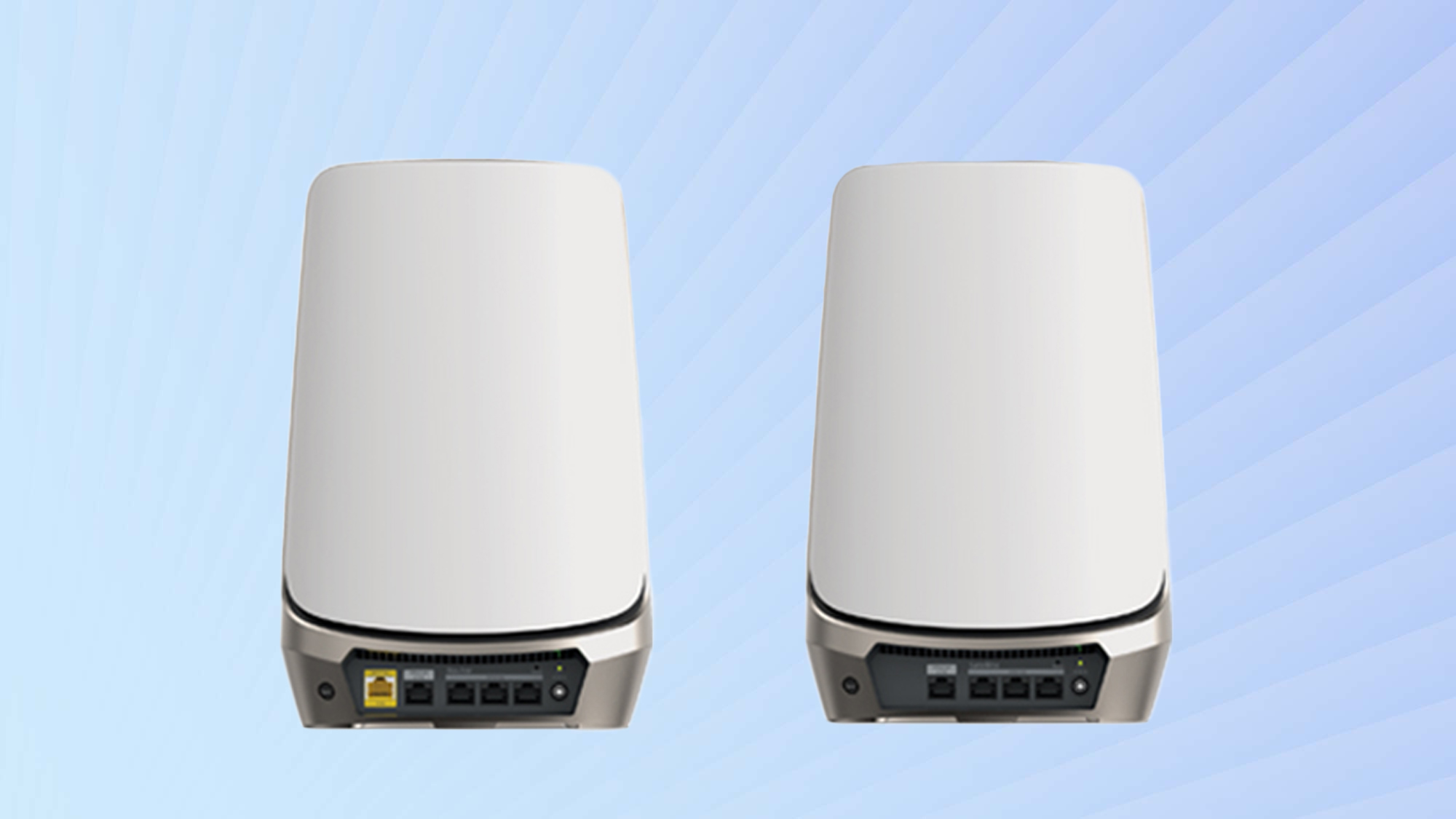
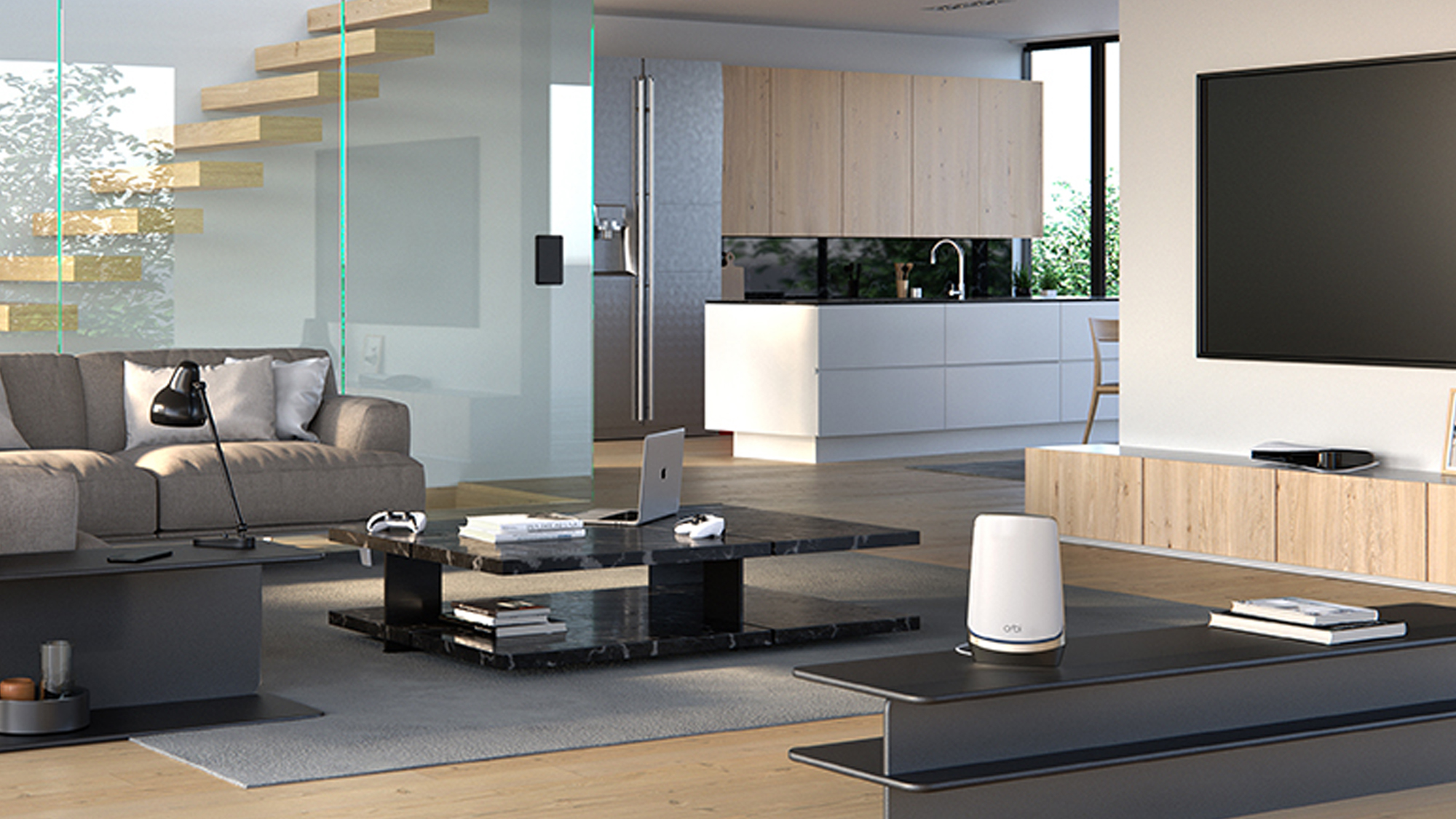
Specifications
Reasons to buy
Reasons to avoid
Easily the fastest mesh-router system on the planet, Netgear's Orbi RBKE963 is also the most expensive. But if you have money to burn, a gigabit broadband connection and an enormous house, this is the mesh system for you.
The RBKE963 can cover up to 9,000 square feet; add a third satellite and you can go to 12,000 square feet. At a distance of 15 feet, the router's 6-Ghz channel delivered throughput of more than a gigabit, the first mesh router to do so in our tests.
Each unit has 12 antennas and four Ethernet ports (one rated at 2.5 Gbps), and the system creates channels on the 2.5, 5 and 6-Ghz bands, plus a fourth 5-Ghz one for backhaul between units.
Netgear offers trial subscriptions to its Armor security software, which includes Bitdefender antivirus, and parental controls. You'll also have to pay for tech support after 90 days.
But if you can afford to pay for this mesh system, you won't mind. If not, the Wi-Fi 6-based Orbi RBK863SB makes for a worthy alternative.
Want to save some money on your next Netgear purchase? Be sure to check out our Netgear discount codes for the latest deals.
Read our full Netgear Orbi WiFi 6E (RBKE963) review.
The best Wi-Fi 6 router for ports
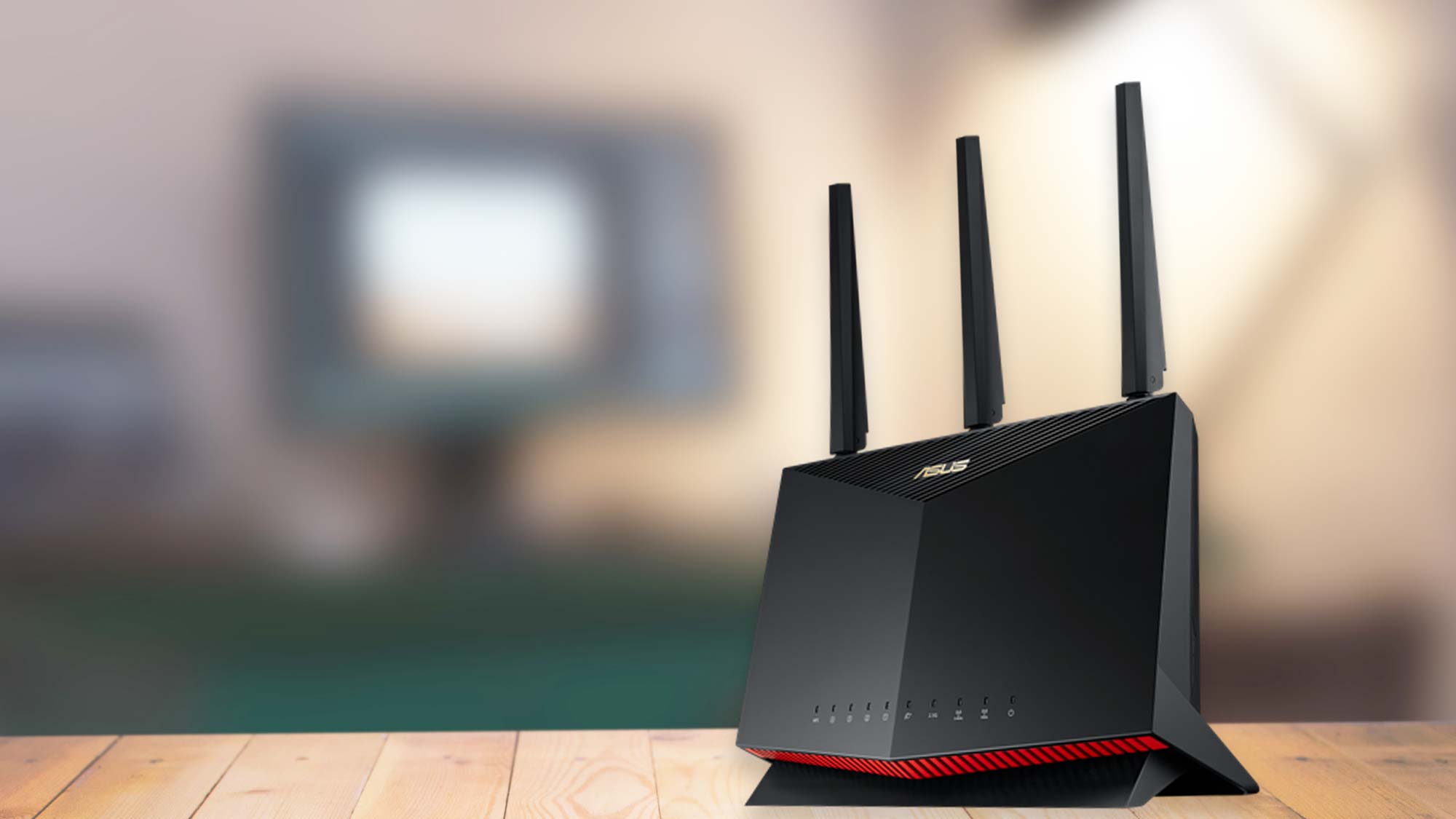
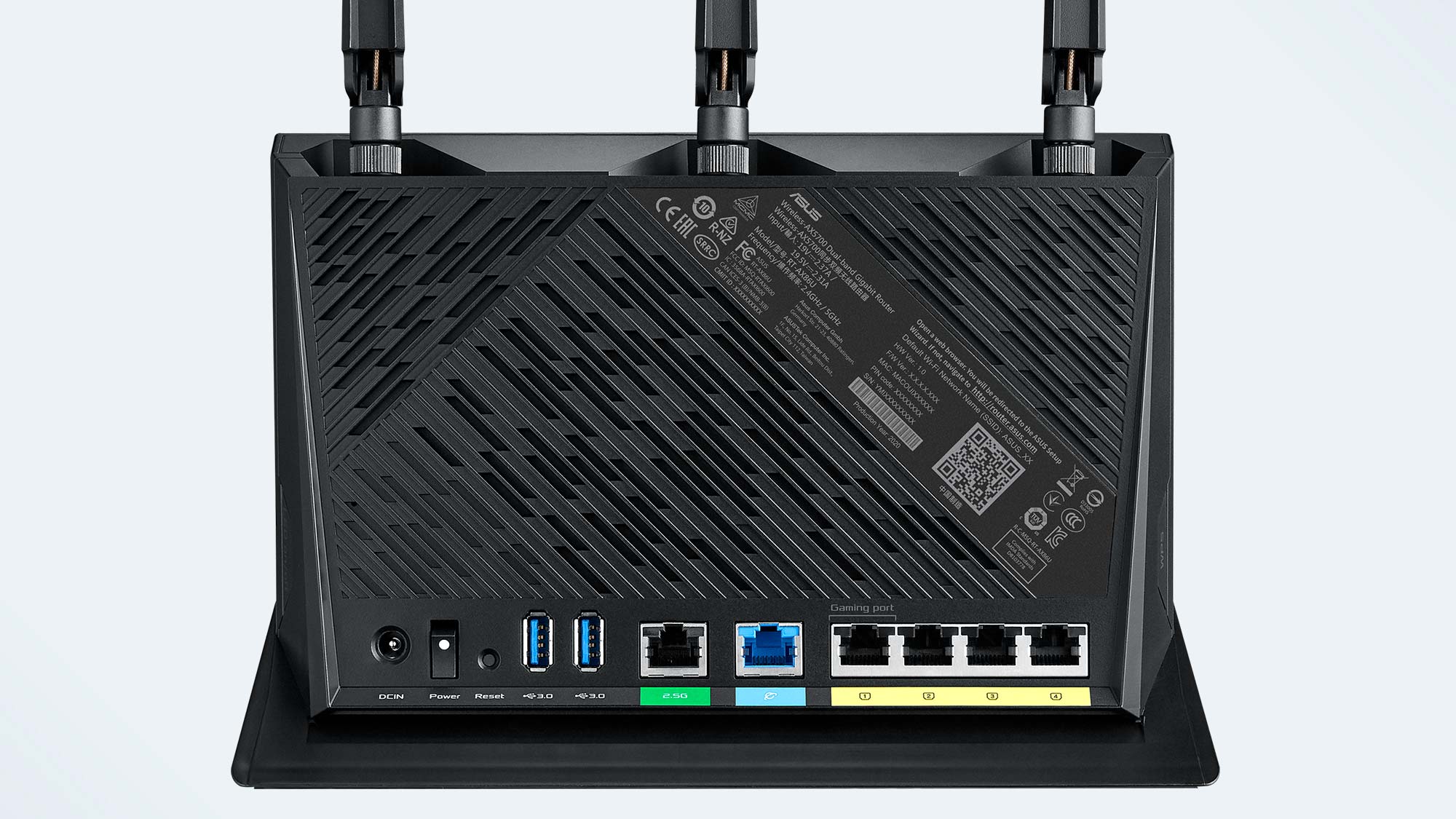
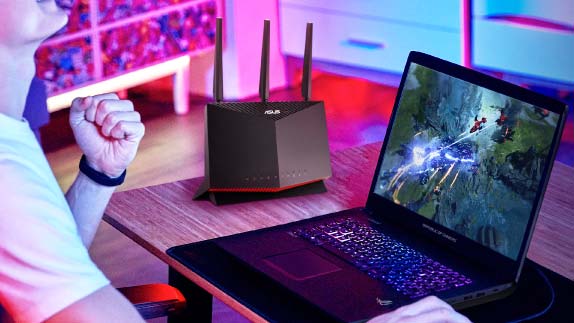
Specifications
Reasons to buy
Reasons to avoid
The Asus RT-AX86U is a Wi-Fi 6 powerhouse that delivers great speeds and killer gaming features, as well as awesome customization options, all for under $300. With high-end performance and lifetime protection against intrusions and malware, it's also a great option for securing your entire home network, providing long term protection without a subscription fee, and carrying a two-year warranty.
But the real draw of the Asus RT-AX86U is the performance, which approaches the the magical 1-Gbps mark to provide speedy and effortless connectivity for all of your devices.
With excellent range and great performance — even through walls and between floors — the RT-AX86U is equal parts general-use router and elite gaming router, and the collection of features and ports it offers are a steal compared to some of the top-performing gaming gear. If you want the best Wi-Fi 6 router for the whole household, the Asus RT-AX86U is it.
Read our full Asus RT-AX86U review.
Testing results
Router specs
| Wi-Fi Router | Wi-Fi Generation | Wi-Fi Spec | Ports | Dimensions (LWH) |
|---|---|---|---|---|
| Netgear Nighthawk RAXE500 | Wi-Fi 6E | AXE11000 | 1 gigabit WAN, 4 gigabit LAN, 2 USB 3.0 | 12.0 x 8.6 x 7.3 inches |
| TP-Link Archer AX55 | Wi-Fi 6 | AX3000 | 1 gigabit WAN, 4 gigabit LAN, 1 USB 3.0 | 10.2 x 5.3 x 1.5 inches |
| TP-Link Deco XE75 | Wi-Fi 6E | AXE 5400 | 1 gigabit WAN, 2 gigabit LAN (Router and Satellites) | 6.8 x 4.1x 4.1 inches |
| Acer Predator Connect W6 | Wi-Fi 6E | AXE7800 | 1 2.5G WAN, 4 gigabit LAN | 10.4 x 10.2 x 4.4 inches |
| Netgear Orbi WiFi 6E (RBKE963) | Wi-Fi 6E | AX10800 | 1 10 gigabit WAN, 1 2.5G LAN, 3 gigabit LAN (Router), 1 2.5G LAN, 3 gigabit LAN (Satellites) | 11.1 x 7.5 x 3.0 inches |
| Asus RT-AX86U | Wi-Fi 6 | AX5700 | 1 2.5G WAN, 1 gigabit WAN, 4 gigabit LAN, 2 USB 3.0 | 9.0 x 6.7 x 3.1 inches |
How to choose the best Wi-Fi 6 router for you
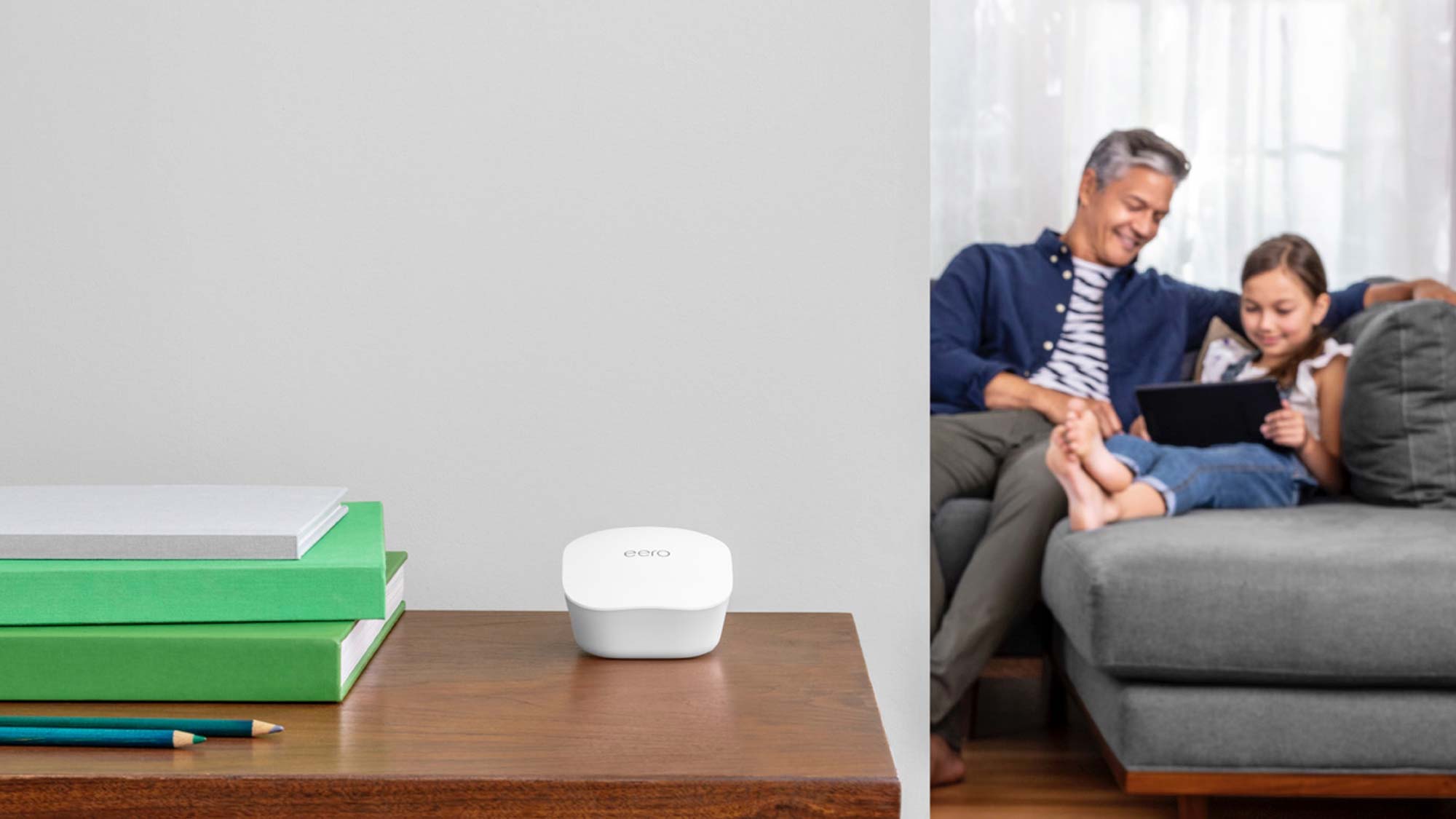
Choosing the best Wi-Fi 6 router isn’t that different from shopping for any other networking product. Although the complicated jargon can be confusing, there are really only two significant questions that need to be answered.
First, what speed do you need for your internet use and devices? Second, what sort of coverage do you need for your home?
Speed: Wi-Fi 6 is good for high-speed connections as the newer standard offers higher throughput than the previous 802.11ac standard. It’s also especially well-suited to gigabit-speed internet plans which may be available in your area.
However, even average broadband speeds will benefit from Wi-Fi 6 as the standard offers better efficiency for sharing bandwidth among many devices.
Compatibility: Similarly, you’ll get the most out of Wi-Fi 6 by using newer Wi-Fi 6-equipped devices. While the standard is backwards compatible and should work with every older Wi-Fi-connected device you own, some of the features, like improved battery life for connected devices, will only work when both your router and your connected devices have Wi-Fi 6 capability.
Most new laptops, desktops, smartphones and tablets now include Wi-Fi 6 while a few even support Wi-Fi 6e which makes a Wi-Fi 6 router the best way to futureproof your home network.
Coverage: The other question is coverage area or how far and wide your Wi-Fi signal will travel. A basic standalone router will usually be sufficient for an apartment or smaller home with ranges of 50 to 100 feet being common.
Larger homes though, with 3,000 square feet of space or more, will benefit from a mesh system that pairs a base unit with satellite extensions that can be placed throughout the house.
These extensions stretch the reach of your Wi-Fi signal to cover even a large home though they can also be expanded as needed with additional units. (Learn more in our article What is a mesh Wi-Fi router, and do you need one?)
Gaming: One other consideration is gaming. The last thing you want is to have your gaming session slowed down or even interrupted by your network connection.
Gaming routers provide all of the same capabilities of a standard router but are optimized specifically for gaming. They reduce interruptions, help eliminate lage and usually offer advanced controls for customizing how data is used among the different devices in your home. (Check out the best gaming routers for more details and our favorite models.)
Price: Finally, the biggest factor in many people’s purchasing decisions isn’t specific features or capabilities, but price. While Wi-Fi 6 products are still notably more expensive than older standards, there are a handful of budget-friendly options out there and even a few with Wi-Fi 6e.
Though many Wi-Fi 6 products cost $300 or more, there are options in both standalone and mesh devices with more affordable prices. While these do offer many of the benefits of Wi-Fi 6, they will often do so with more modest device handling and less impressive coverage. Still though, a solid Wi-Fi 6 standalone router can be had for under $150 and a mesh system can be found for under $300.
What about Wi-Fi 7?
If you’re considering upgrading from an older router to one with Wi-Fi 6 or even Wi-Fi 6E, you might be wondering about Wi-Fi 7 as it is the latest and greatest wireless standard after all.
While the best Wi-Fi 7 routers were significantly more expensive when they first launched last year, they’ve since come down in price and now, companies like TP-Link, Asus, Netgear and others are making more budget friendly options.
It’s worth noting though that some of these cheaper devices are actually dual-band instead of tri-band routers. This means that while they do give you access to the 2.4 and 5 Ghz bands, you don’t get access to the faster 6 Ghz band, first introduced with Wi-Fi 6E. If you want the fastest Wi-Fi possible, this isn’t something you don't want to overlook.
Another thing to think about when deciding between Wi-Fi 6, Wi-Fi 6E and Wi-Fi 7 is your internet speeds. If you have a plan that’s less than a gigabit, you’re better off with a less expensive Wi-Fi 6 router for now and then upgrading later if you decide to move up to a faster plan. For those with gigabit or multi-gig speeds, you can take full advantage of both Wi-Fi 6E and Wi-Fi 7. However, as Wi-Fi 6E is older, you’re more likely to get a better deal on a more powerful router or even a mesh router.
If you have the budget and devices that support the 6Ghz band like the iPhone 16 or a newer computer or tablet, Wi-Fi 7 might make more sense so that you don’t have to upgrade your router a few years from now.
How we test the best Wi-Fi 6 routers
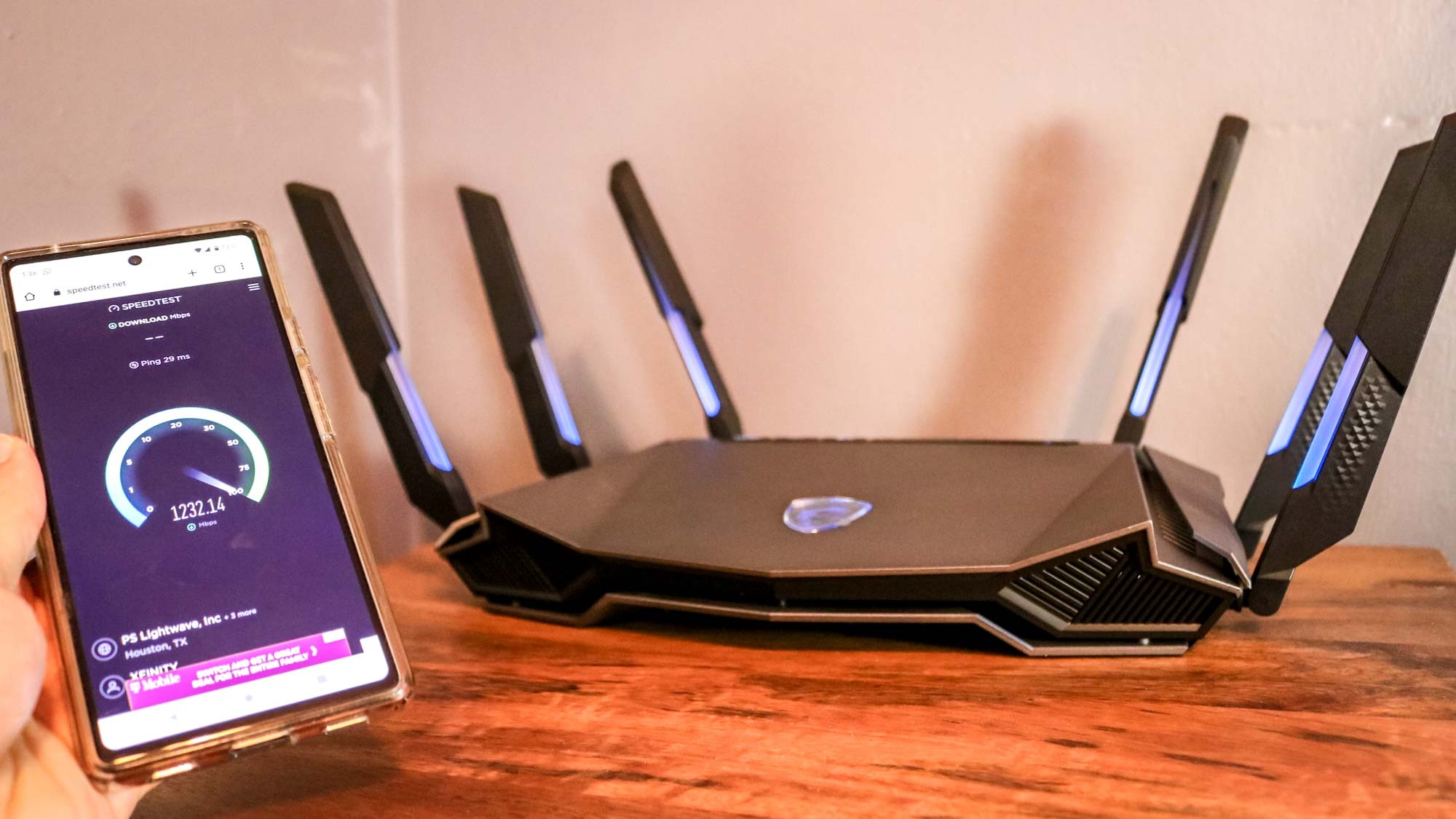
We test every router we review to measure their performance and range, in addition to hands-on use to evaluate their setup process and the quality of their settings and features.
Throughput describes how much data a router can move back and forth over its wireless connection. Higher throughput will serve you better in data-heavy use cases like streaming video, gaming or connecting multiple devices at once.
We measure throughput using Keysight IxChariot, first at a 5-foot distance without obstructions in order to gauge the maximum amount of data a router can move. We then measure how much data a router can move at 50, 75 and 100 feet, so that you can choose the best model for smaller homes and apartments where short-range performance is more of a priority.
We also test performance through walls and ceilings to determine how well a router can provide a signal when dealing with Wi-Fi dampening conditions which are common to many buildings and homes.
For mesh routers, we perform additional testing to determine how well the mesh system does when it comes to sending a signal through both the main router and its satellite units.
Following our throughput tests, we also put the router through real-world tests by connecting a number of devices – laptops, TVs, smartphones and tablets — and stream several games, TV shows and movies simultaneously to see how well a router performs under strain.
For more information, check out our how we test page for Tom's Guide.
Meet our testers

As someone who's been working from home for the past six years, Anthony Spadafora has tried everything from Wi-Fi extenders to powerline adapters to get the most out of his home network before finally upgrading to a mesh Wi-Fi system. Along the way, he's tested out loads of different routers and network configurations. Based on what he's learned, Anthony tries to highlight the critical role Wi-Fi routers play in our day to day lives and how a mesh network can help solve the most common connectivity issues like Wi-Fi dead spots.

With experience in testing, using and evaluating wireless data from before Wi-Fi was even a word, Brian Nadel has tried out and reviewed every major router available in his home networking lab. A LAN nerd, his philosophy is to use the router the way you would, testing networking gear for ease of setup, performance, security and above all for value. The result is peace of mind when it comes to choosing the right router.
Sign up to get the BEST of Tom's Guide direct to your inbox.
Get instant access to breaking news, the hottest reviews, great deals and helpful tips.

Anthony Spadafora is the managing editor for security and home office furniture at Tom’s Guide where he covers everything from data breaches to password managers and the best way to cover your whole home or business with Wi-Fi. He also reviews standing desks, office chairs and other home office accessories with a penchant for building desk setups. Before joining the team, Anthony wrote for ITProPortal while living in Korea and later for TechRadar Pro after moving back to the US. Based in Houston, Texas, when he’s not writing Anthony can be found tinkering with PCs and game consoles, managing cables and upgrading his smart home.
-
KevinKProf I have seen reports from users that the TP-Link routers require a $5/month subscription to access their features. This is a big omission from your review. Can you confirm?Reply -
fxv300 Has anyone purchased or reviewed the Archer AX10 AX1500 Wi-Fi 6 Router or the Archer AX50 AX3000 Dual Band Gigabit Wi-Fi 6 Router ?Reply
How do they compare against the Netgear RAX20 ? -
mwerneburg Hi. After reading this, I bought a Netgear RAX4 Wifi 6 router. It was a disaster. Like so many commenters on the manufacturer's product page, I experienced constant problems with the router: not all of my family members could connect in the first place, and then the router would drop all connections 1-3 times a day. I couldn't reliably use the suggested "Nighthawk" app to connect to the router to administer it. I eventually got through a firmware upgrade using my son's iPhone (one of two identical phones, it was the only one in the home that could connect) and that did nothing. Just a lousy product.Reply -
rlevs Reply
I just purchased the AX50 AX3000, but I’m sending it back, because as another reviewer stated there’s a $5 per MONTH fee to use an app that controls some key functions like QoS, among others. Absolutely ridiculous that a: they are pulling that crap and b; Toms Guide review didn’t mention it. Take it off your listfxv300 said:Has anyone purchased or reviewed the Archer AX10 AX1500 Wi-Fi 6 Router or the Archer AX50 AX3000 Dual Band Gigabit Wi-Fi 6 Router ?
How do they compare against the Netgear RAX20 ? -
El Pato Grande I purchased the ASUS ZenWifi AX system, based in no small part to past good experience with other ASUS products and the great reviews of this product.Reply
Big Mistake! The System is entirely unreliable, with numerous problems, the most significant being the system crashing every 2 to 4 hours and rebooting. Unlike the past ASUS support has degraded to the point where they are no help at all.
Being a past ROG customer for pretty much everything from ROG Motherboards and laptops to Monitors, their support is nothing like it used to be.
Their suggested troubleshooting was nothing more than help a NOOB would require. It didn't solve any issues.
Numerous "Reset to Factory Defaults" didn't solve the problem. I did manage to solve a few of the issues but swapping the nodes since they're symmetrical, making the former master node the remote and vice versa.
Following the support folks advice was worthless, got me nowhere in spite of frequent sending diagnostic info. An analysis of the syslog didn't show any error messages prior to a crash.
Eventually, I did another factory reset and went with totally default settings. That was stable but didn't meet my requirements. I let that run for a day or so before turning on IPv6 (in "Native" mode, again ASUS provided no help with this setting and their documentation on and in their "manual" was zero help). That also ran for over a day with no problems.
I next turned on AiProtection, one of the major router features. running with the settings recommended by that feature except for UPnP (I left it on), which I need for my network. 4 hours later, the crashes resumed.
So I contacted the ASUS office of the CEO and they promised to do a Manufacturer's Return and send me a check. I'm now waiting for their RMA instructions.
With these flaws (and others) the system is of little use to me. I would warn anyone with a fast and complex network away from this product.
I need a system that Allows for a large number of devices with high speed connections.
I'm still looking at my options after I return this system. The lead candidate for me at this time is the AmpliFi™ Alien system. Reviews on this are sparse, but I've had much better luck with Ubiquiti products in the past as they're generally commercial grade instead of consumer grade. Runner ups are the Netgear Orbi and Linksys Velop systems.
I'm quite disappointed that the Ubiquiti system wasn't included in this review.
Background: I have 1 GB Internet (Comcast), 1 GB Ethernet connecting the nodes and 14 of my over 50 devices. The rest are on Wifi with many IoT devices.
I also stream up to 2, 4K UHD streams simultaneously to 2 TVs, 3 Computers, 2 Amazon Echo Shows. I have 6 other Echo devices, Nest Thermostat, 3 Nest Protect Smoke/CO2 Alarms, plus a bunch of other IoT gadgets.
While my home isn't large, it has robust walls and even a 2.4 Ghz signal has trouble in my home. The big chimney in the center of the home doesn't help. I have Ethernet spanning the length of the home but no Ethernet in the middle as my home office is at one end of the house and the Media room where the Comcast termination and equipment rack is at the other end.
My plan is to put in a 3 node system with the base node in the Media Room and ethernet connected satellites in the Office and Living room (it's on the other side of the chimney and I can reach it with an new Ethernet cable without too much trouble. -
mwerneburg ReplyEl Pato Grande said:I purchased the ASUS ZenWifi AX system, based in no small part to past good experience with other ASUS products and the great reviews of this product.
Big Mistake! The System is entirely unreliable, with numerous problems, the most significant being the system crashing every 2 to 4 hours and rebooting. Unlike the past ASUS support has degraded to the point where they are no help at all.
I don't know what's happened at Asus but the company that built a reputation on motherboards appears to be long gone. The Asus Wifi router I bought about 3-4 years ago systematically degraded to the point where I could no longer connect as a Wifi client or get the admin interface to function properly. And the Asus laptop I bought for my wife started developing cracks in its lid hinges about 18 months after I bought it. Asus used to be a go-to name but now it's a hazard. -
andreacanzi ReplyKevinKProf said:I have seen reports from users that the TP-Link routers require a $5/month subscription to access their features. This is a big omission from your review. Can you confirm?
looking at www. tp-link. com / us / homecare / it seems that it is a free service for "Lifetime of Product" they say:
*Free lifetime subscription to TP-Link HomeCare™ is included with purchase on select TP-Link routers at no additional cost. “Lifetime Subscription” refers solely to the life of the purchased device and can not be transferred. TP-Link reserves the right to modify the service and feature at any time.
deco and ax series are supported.
